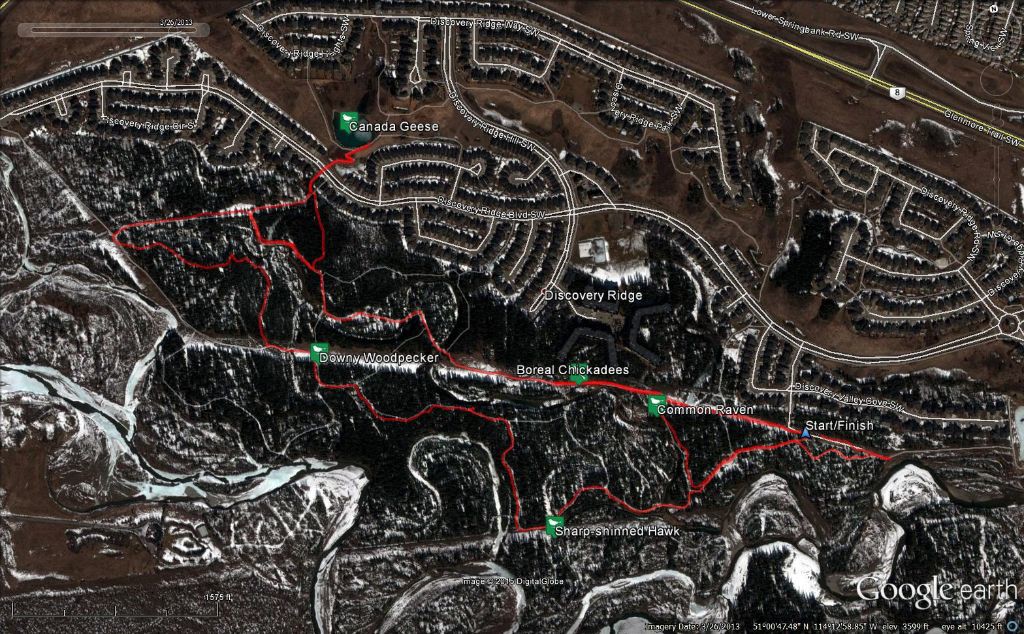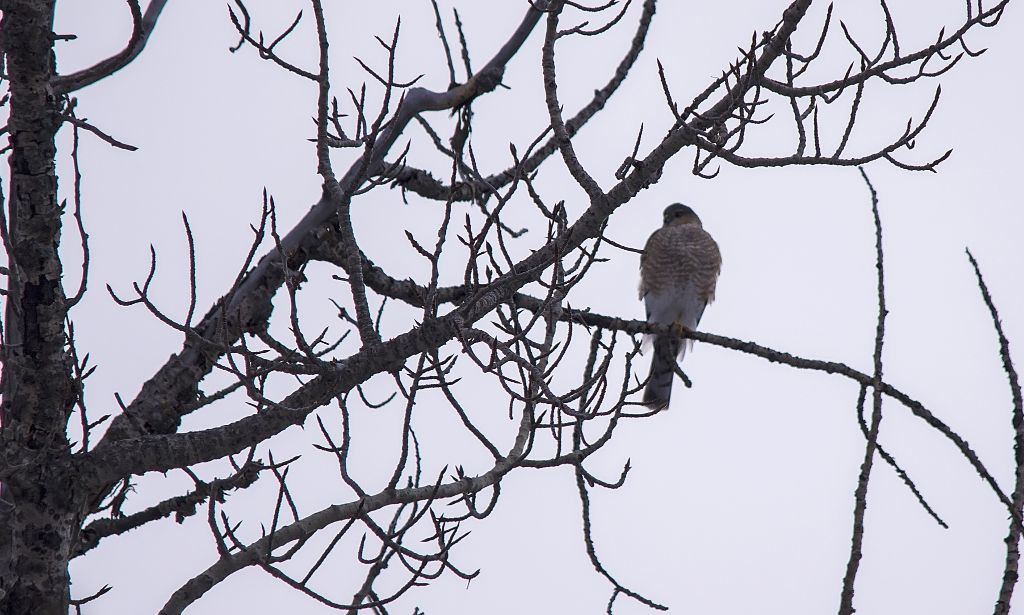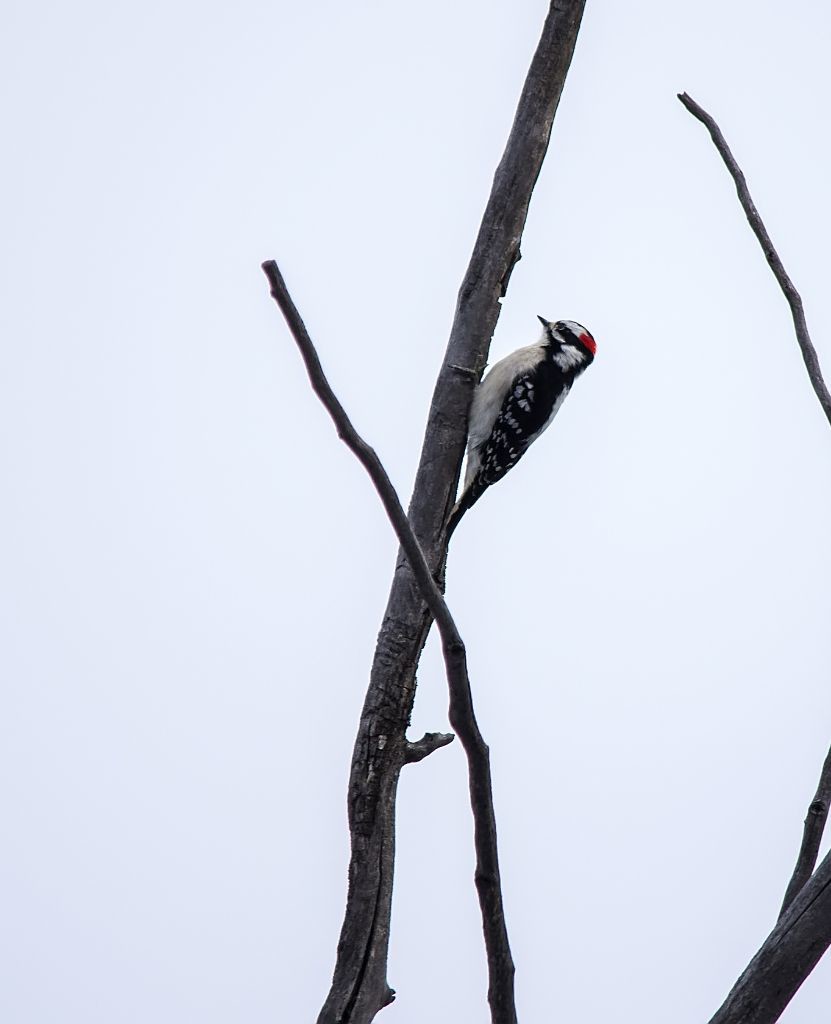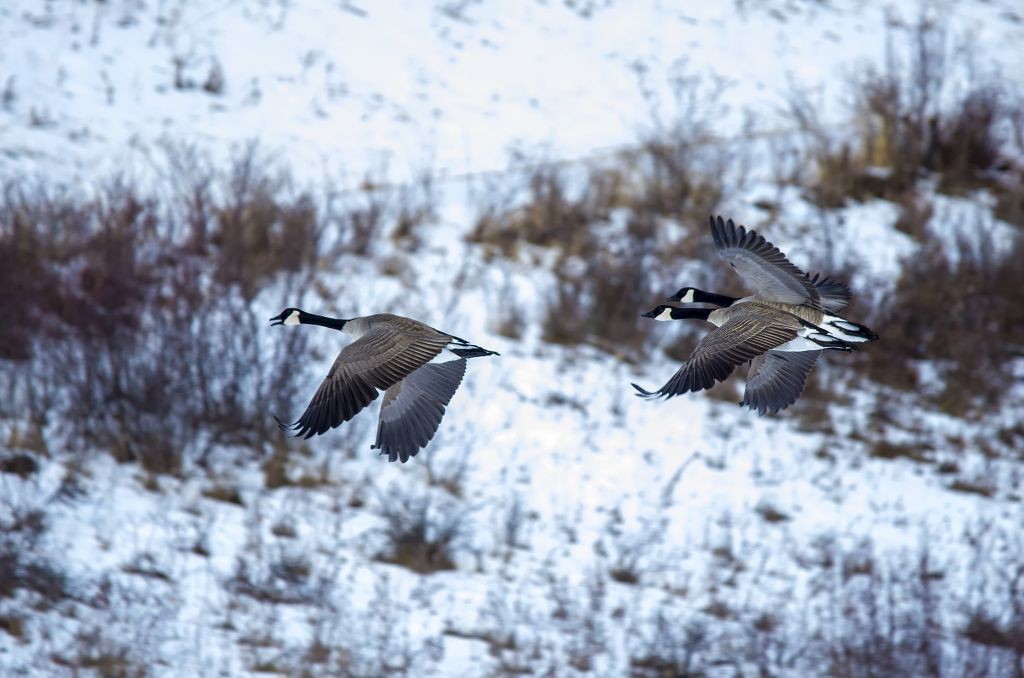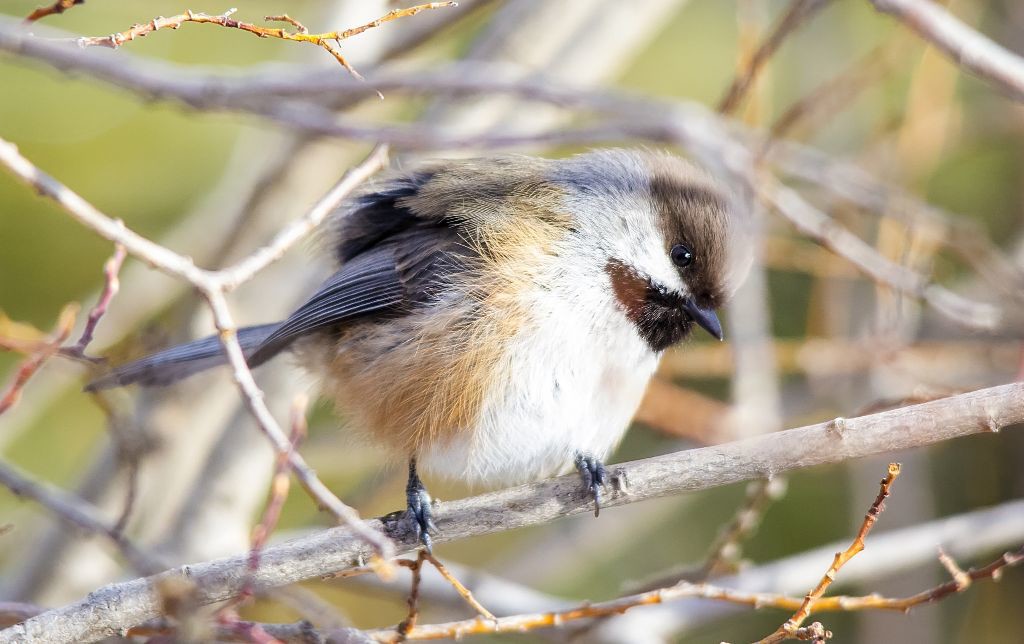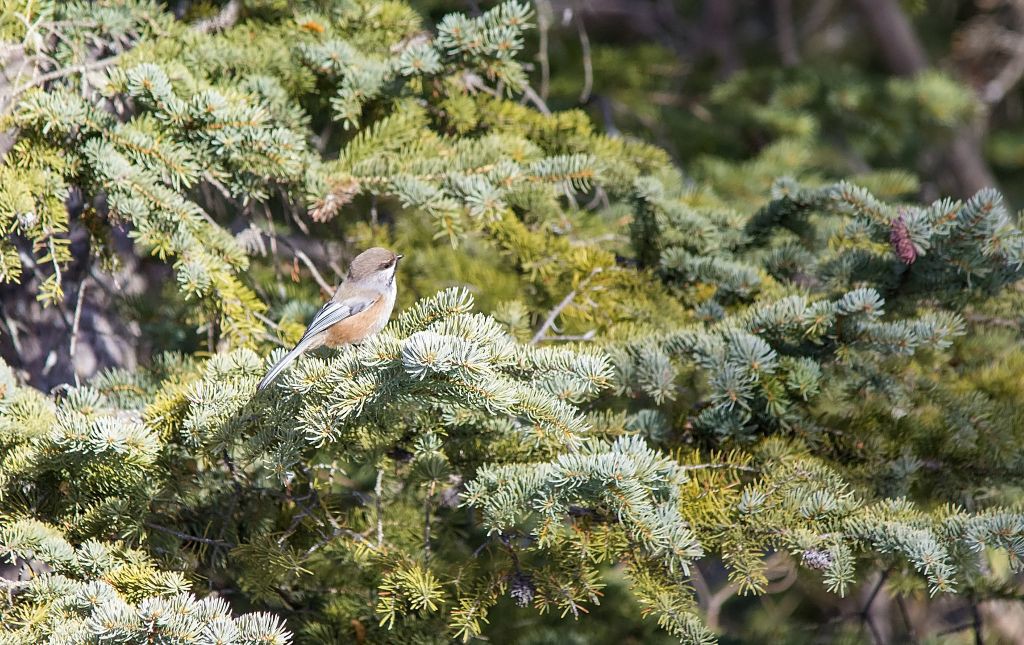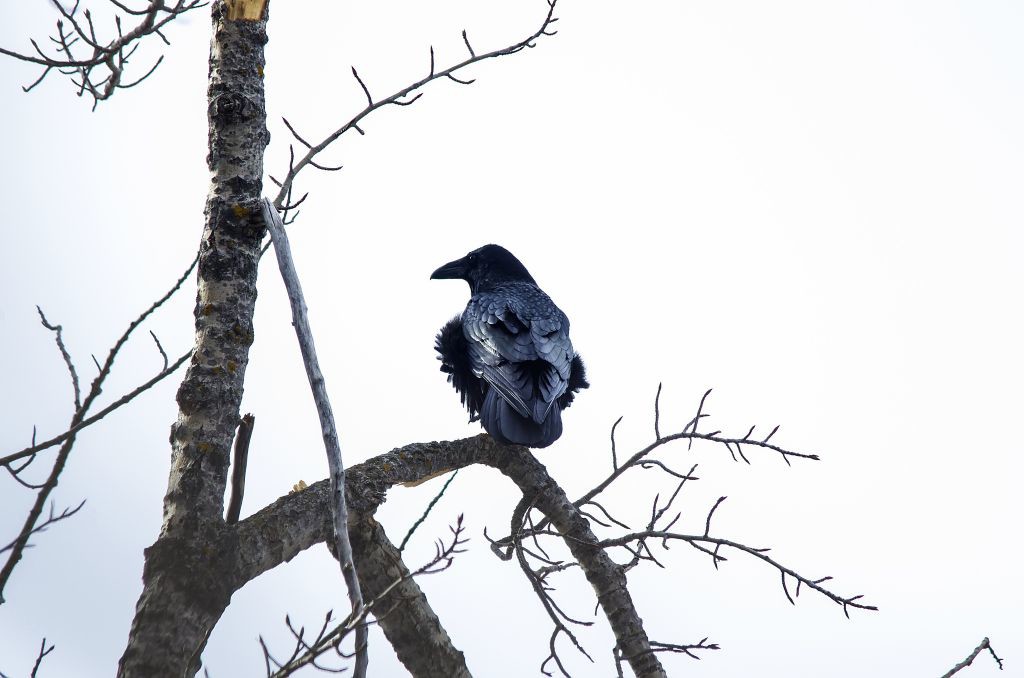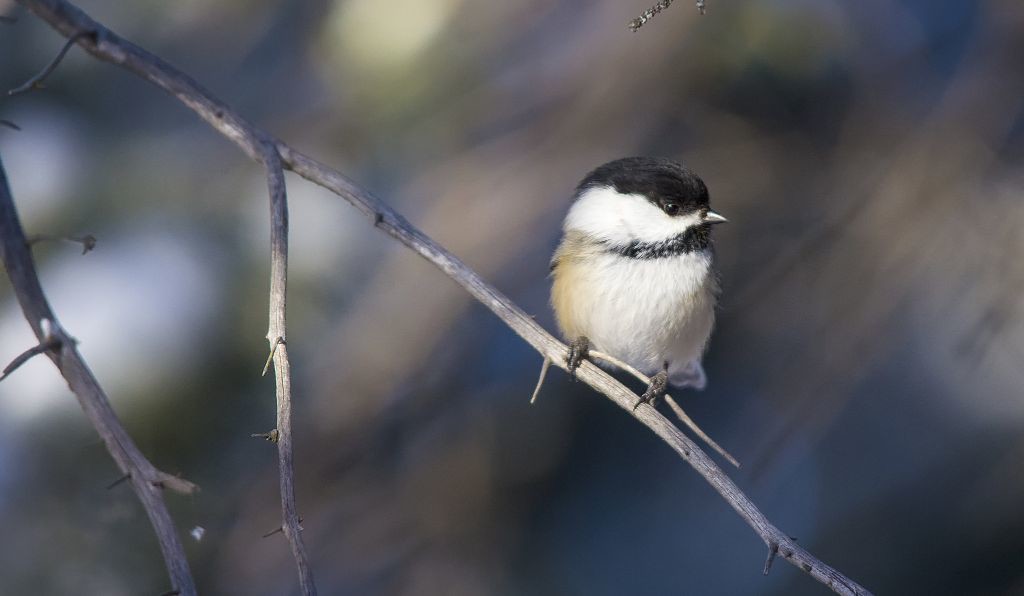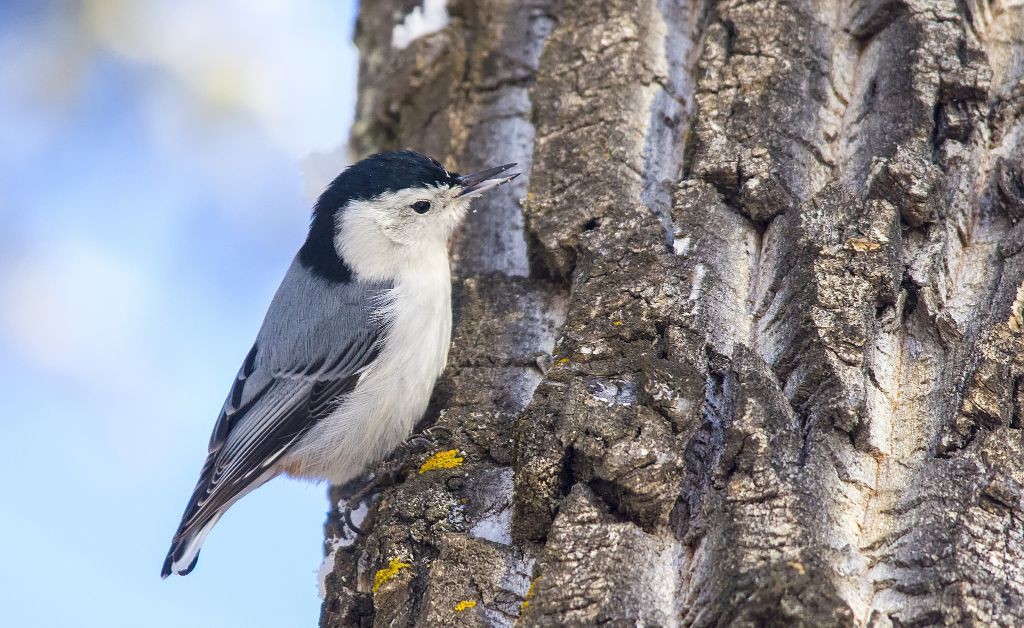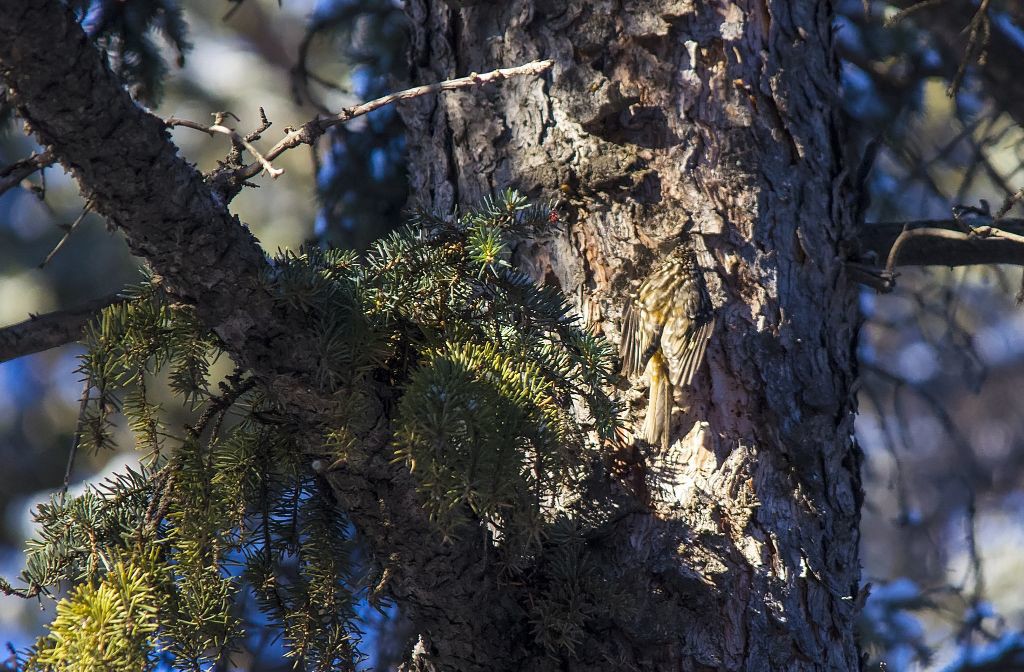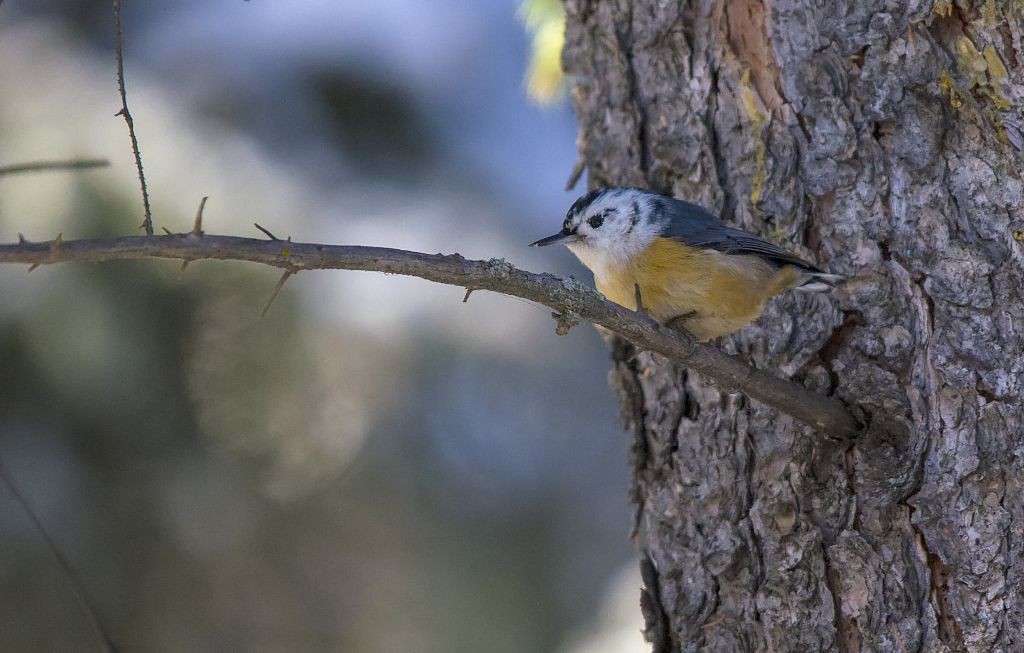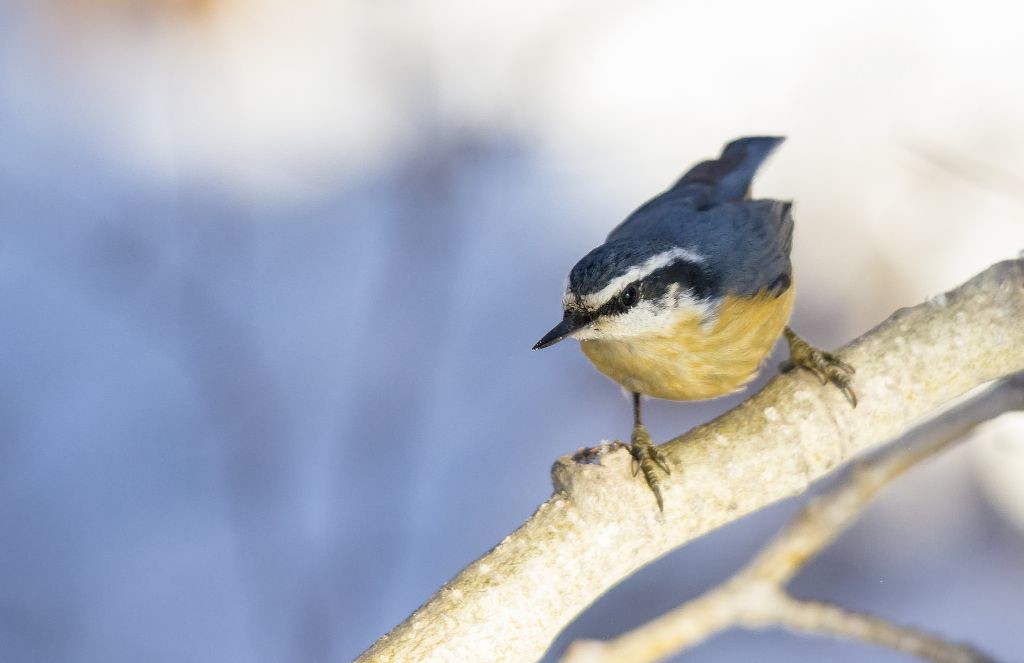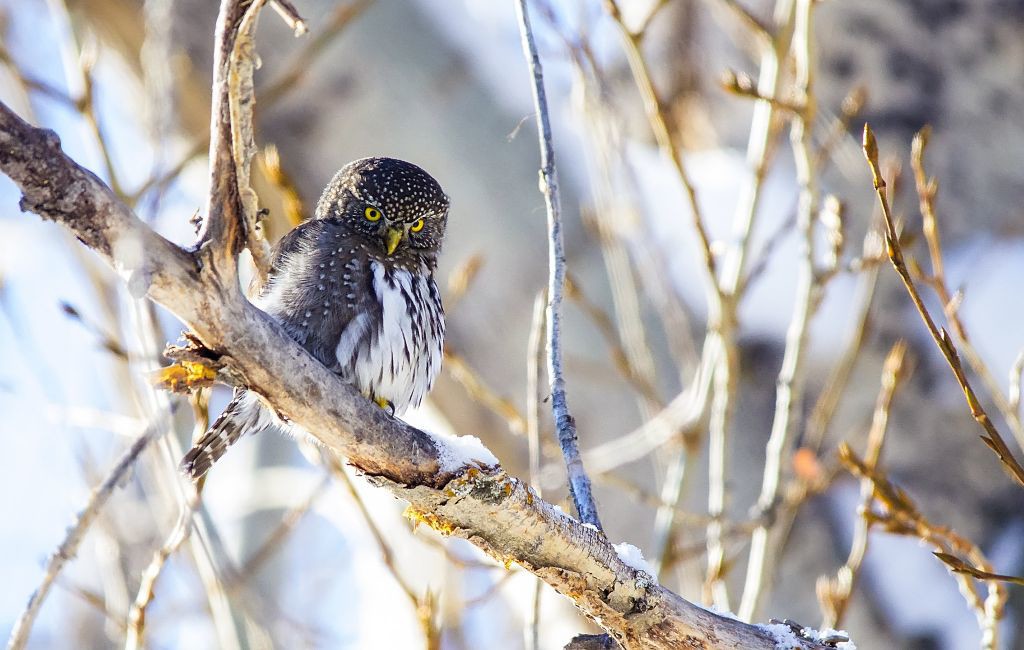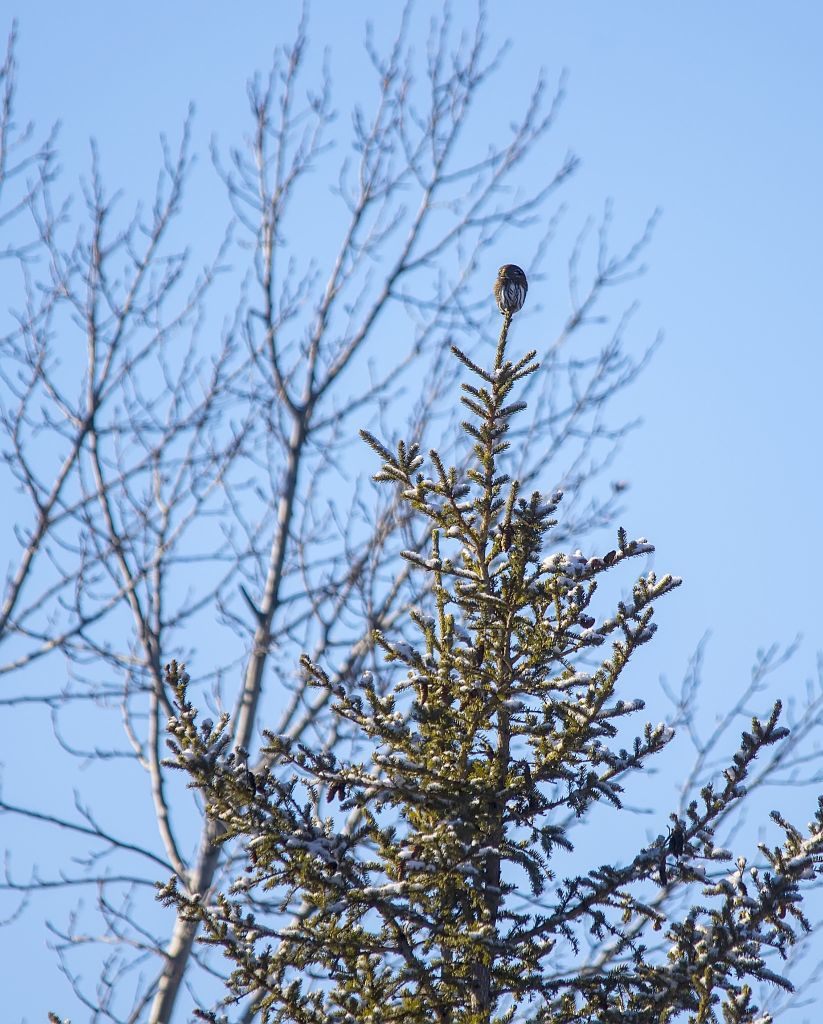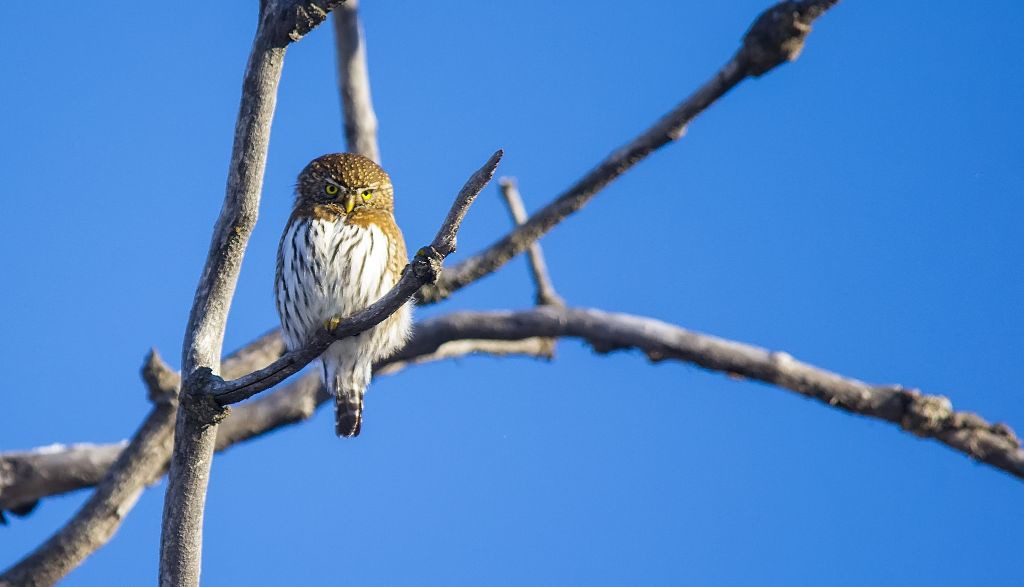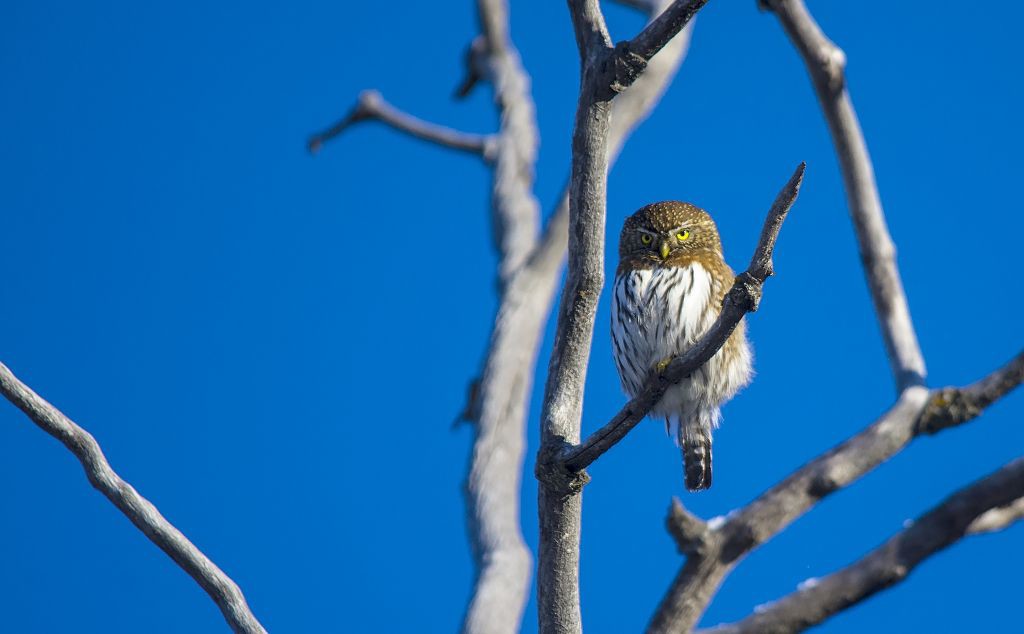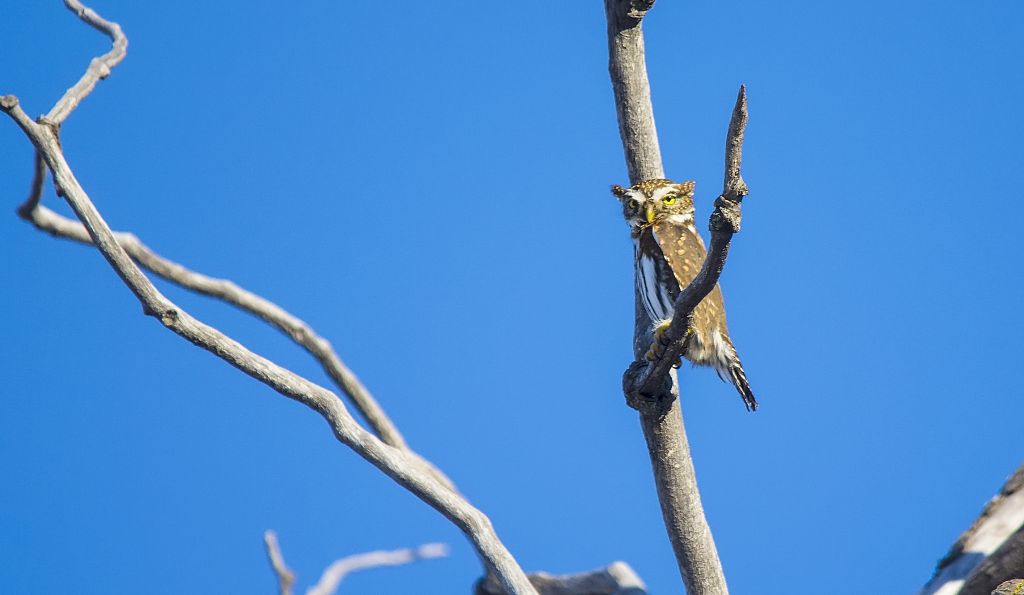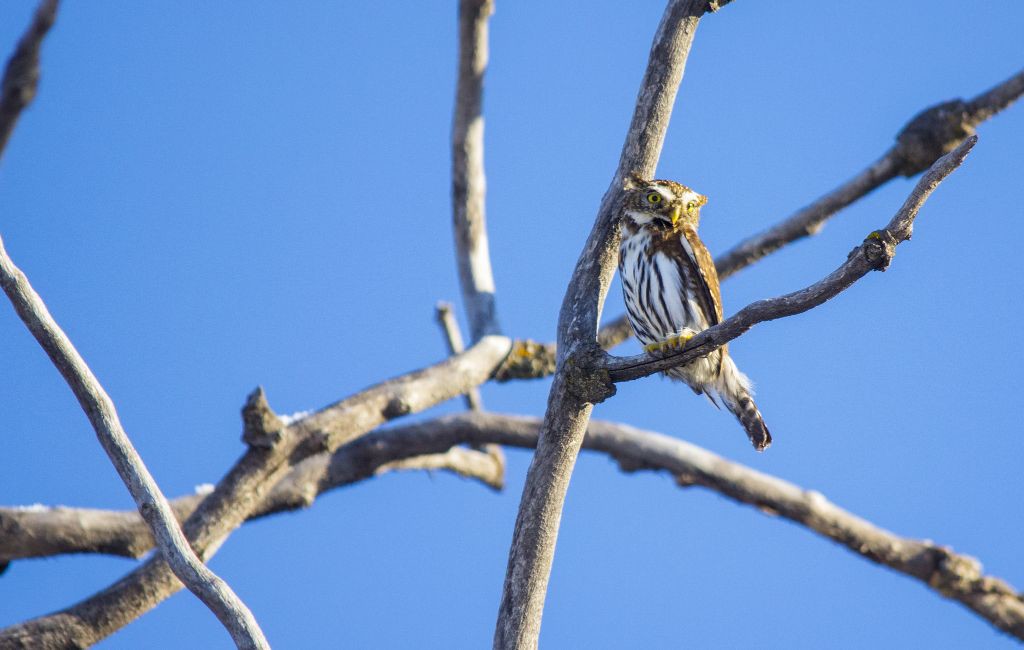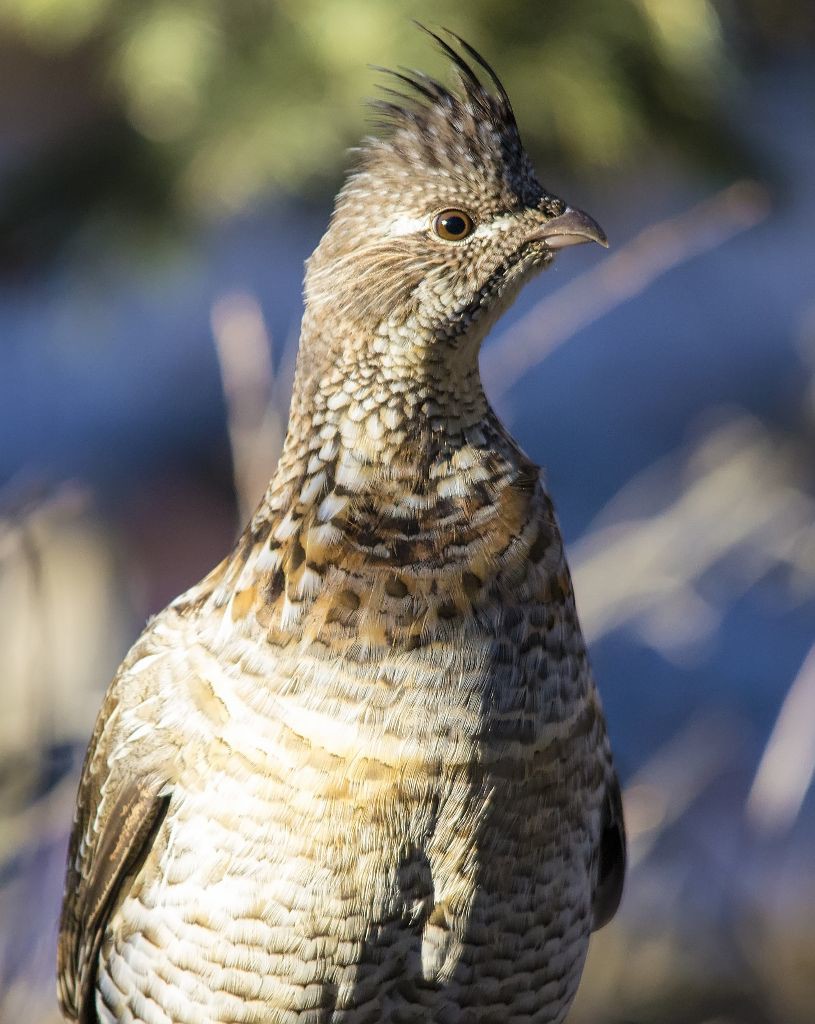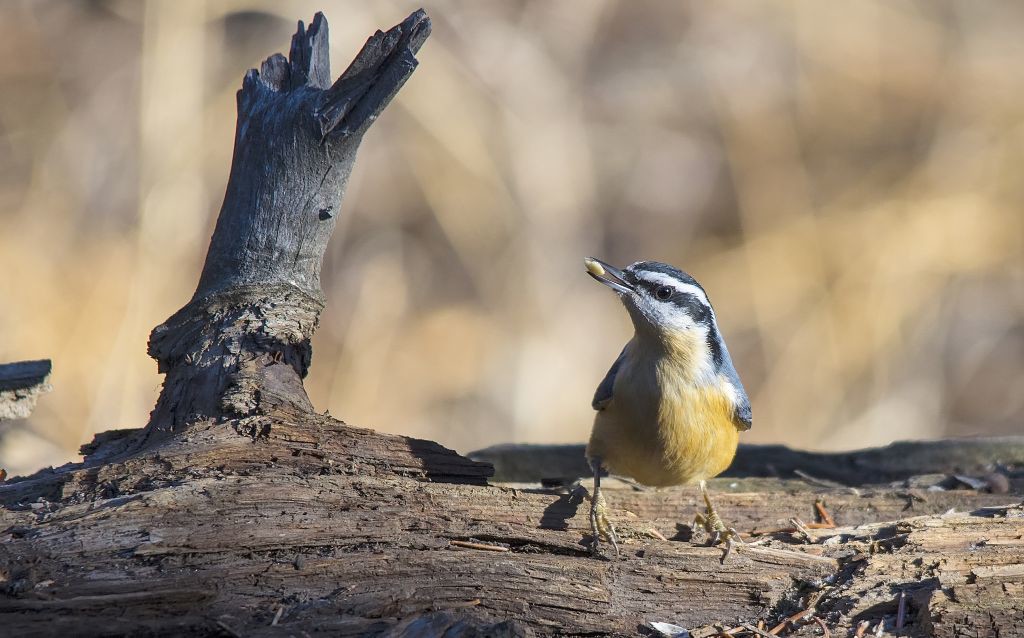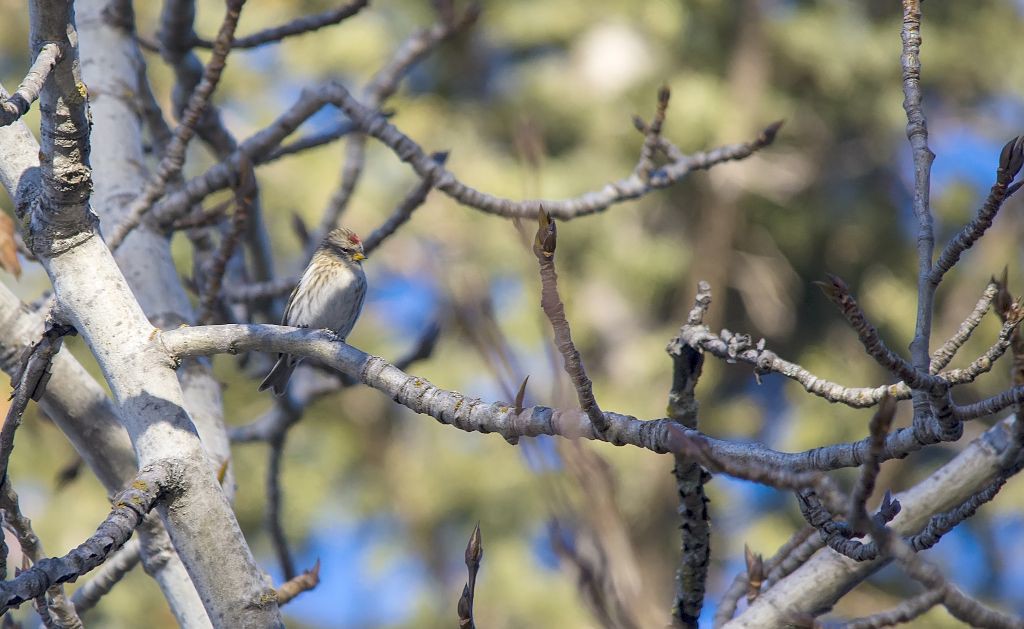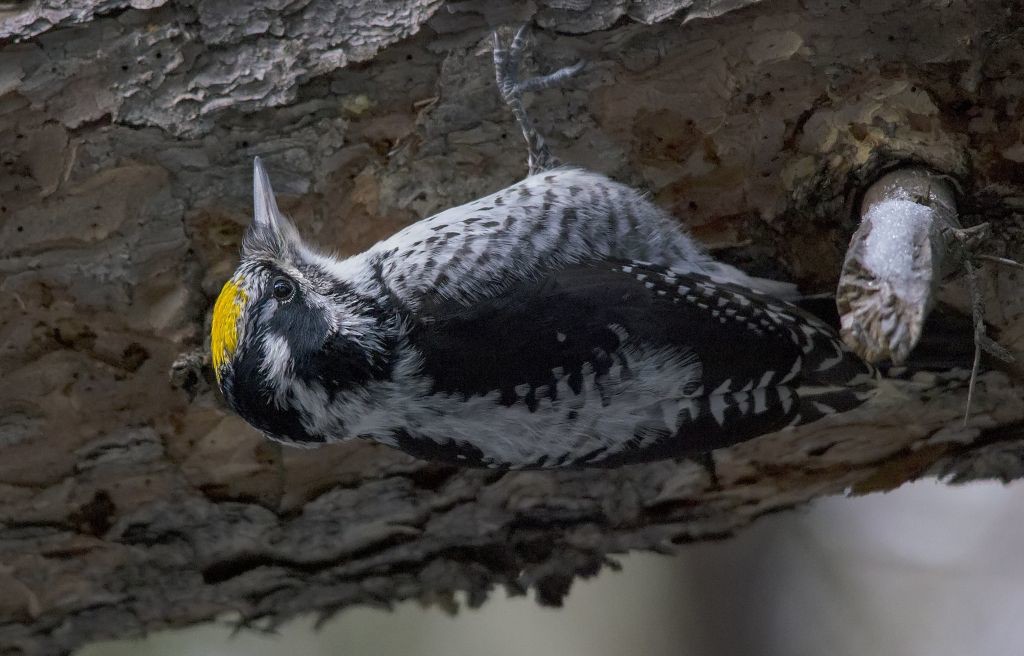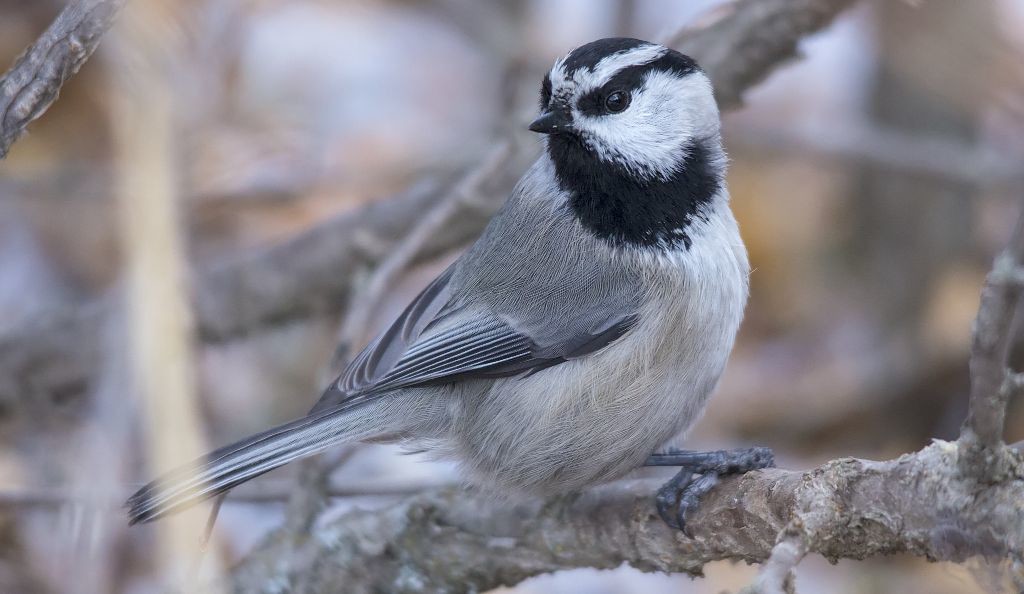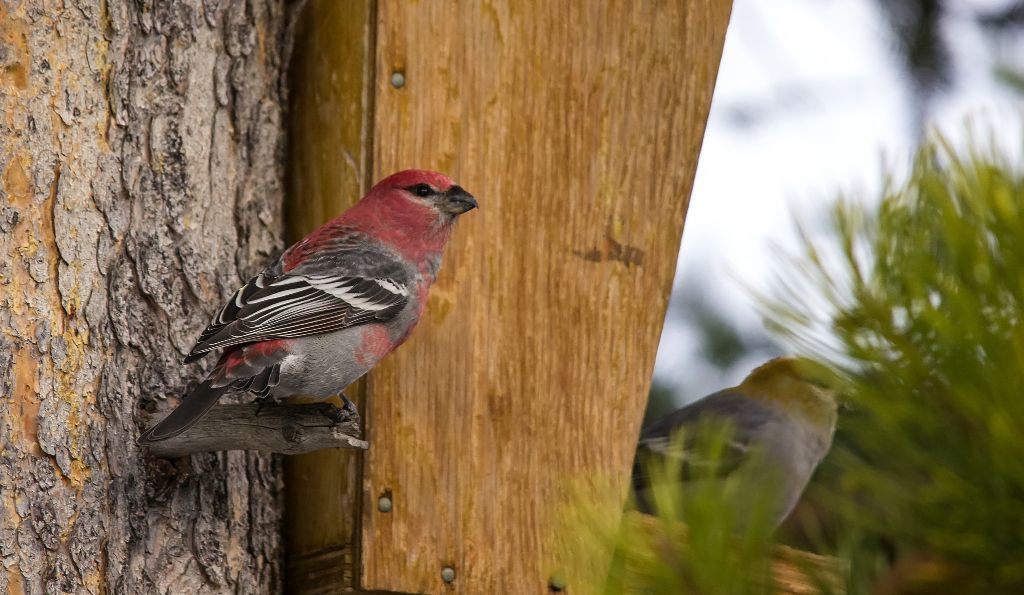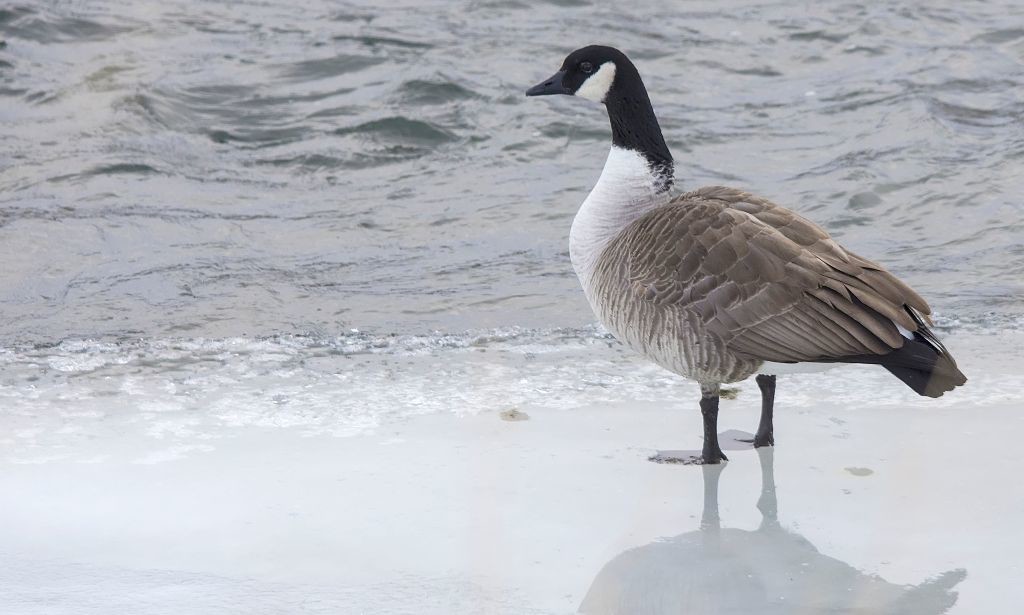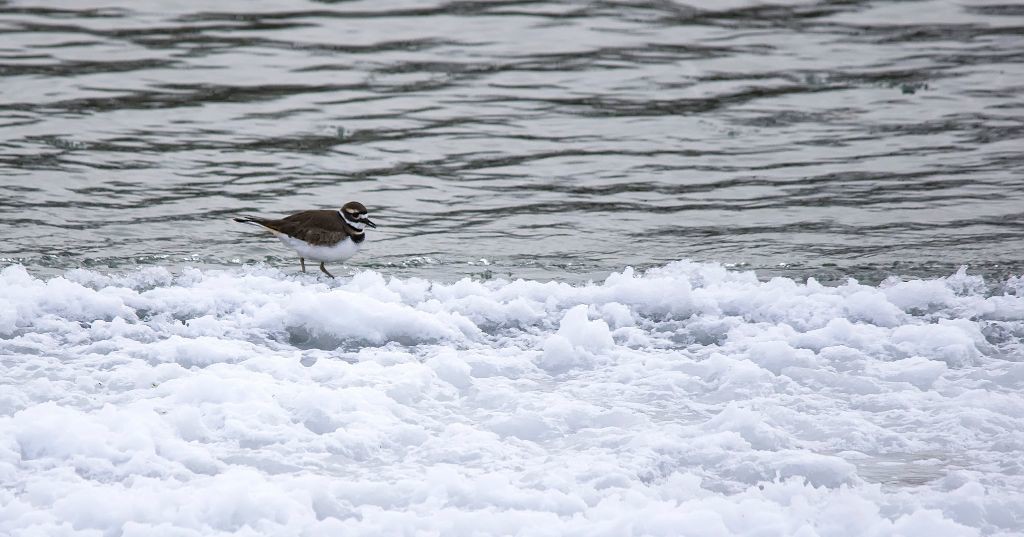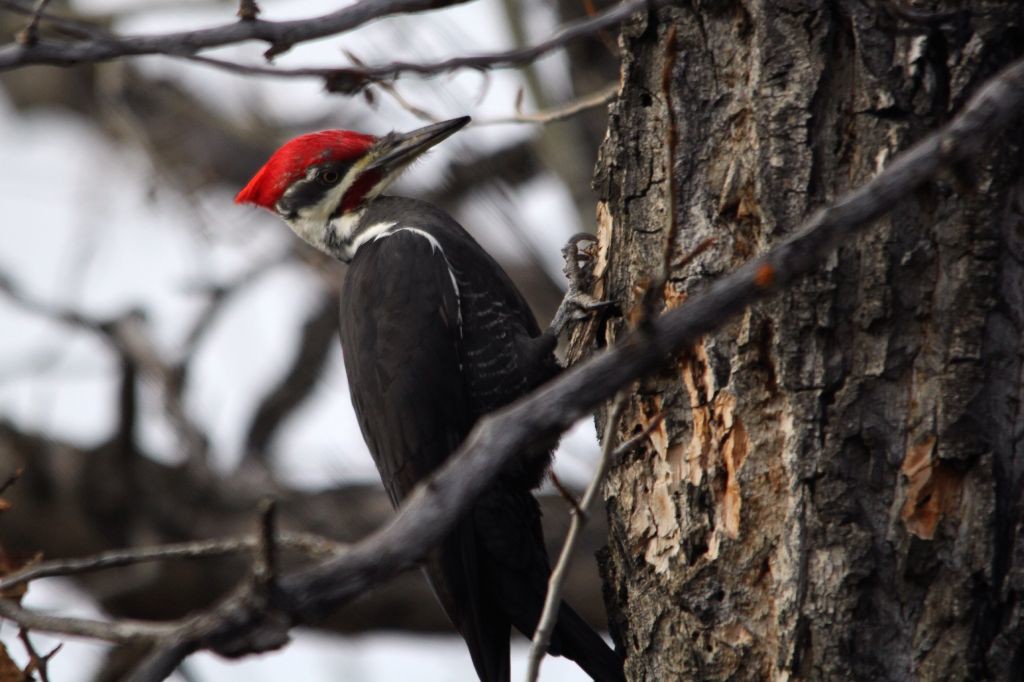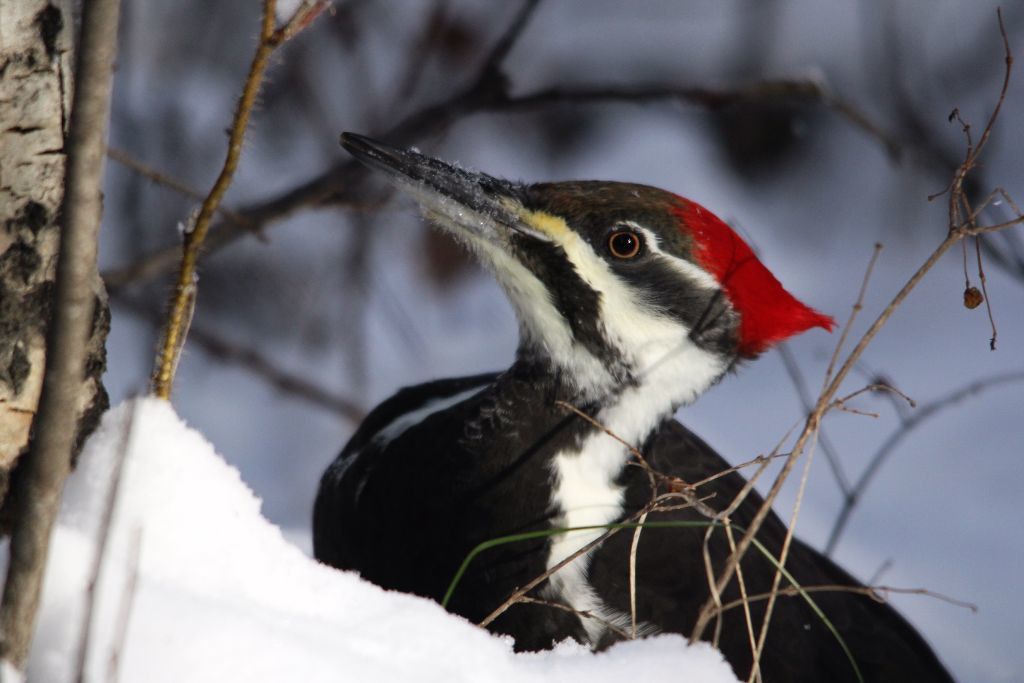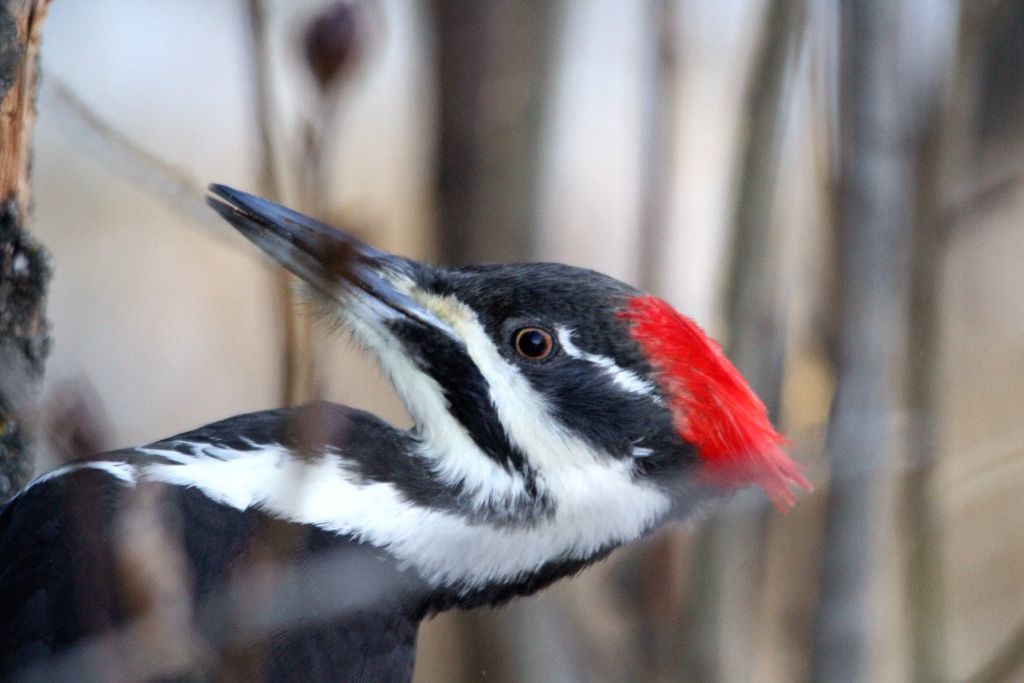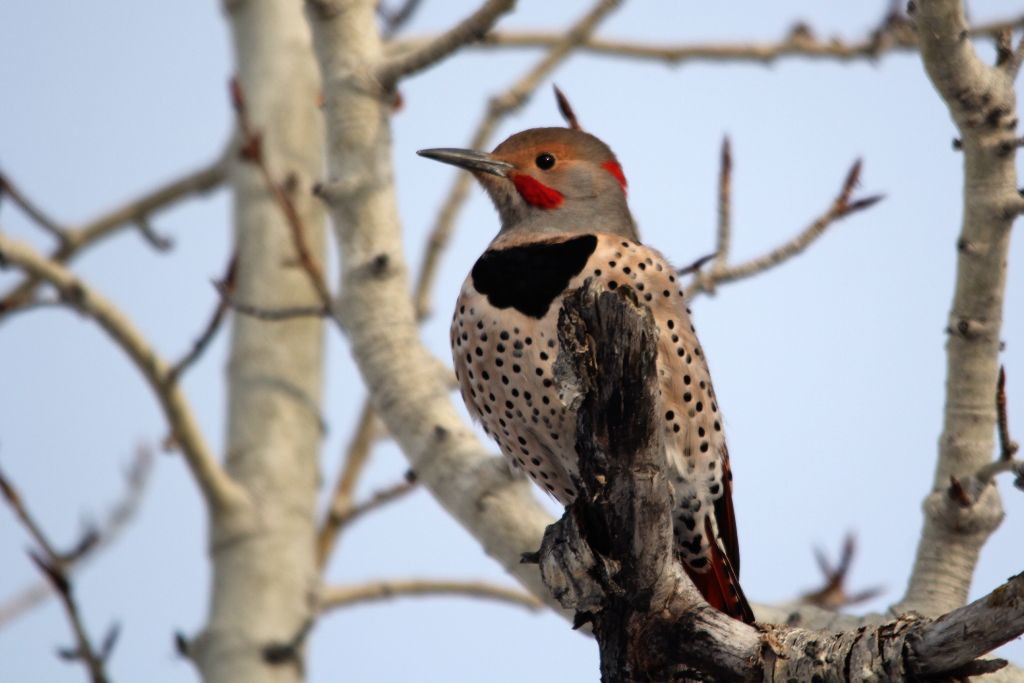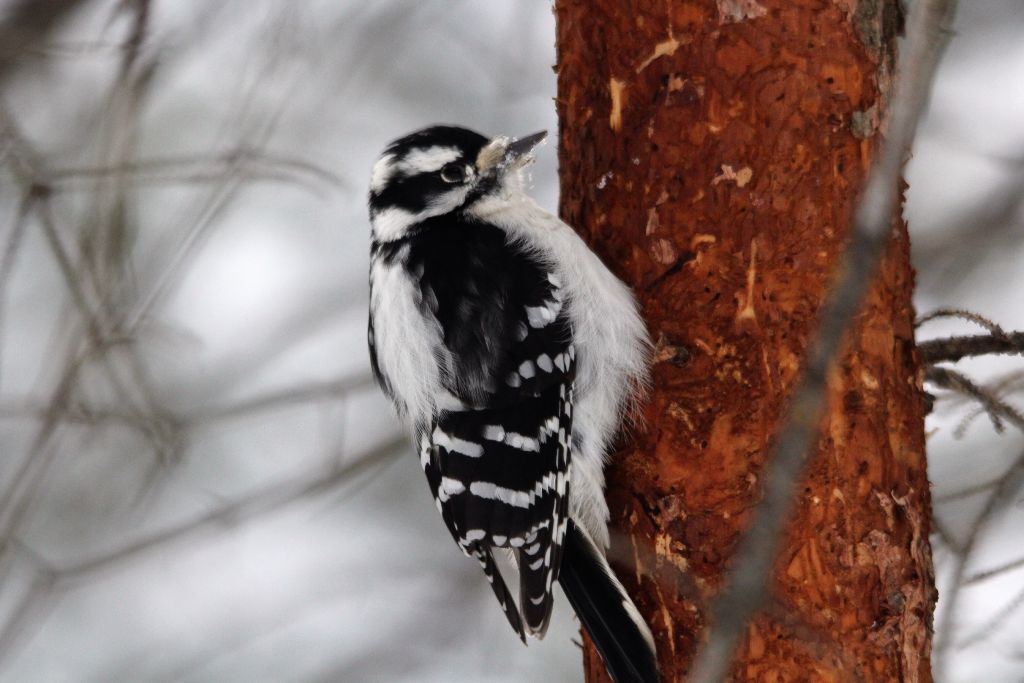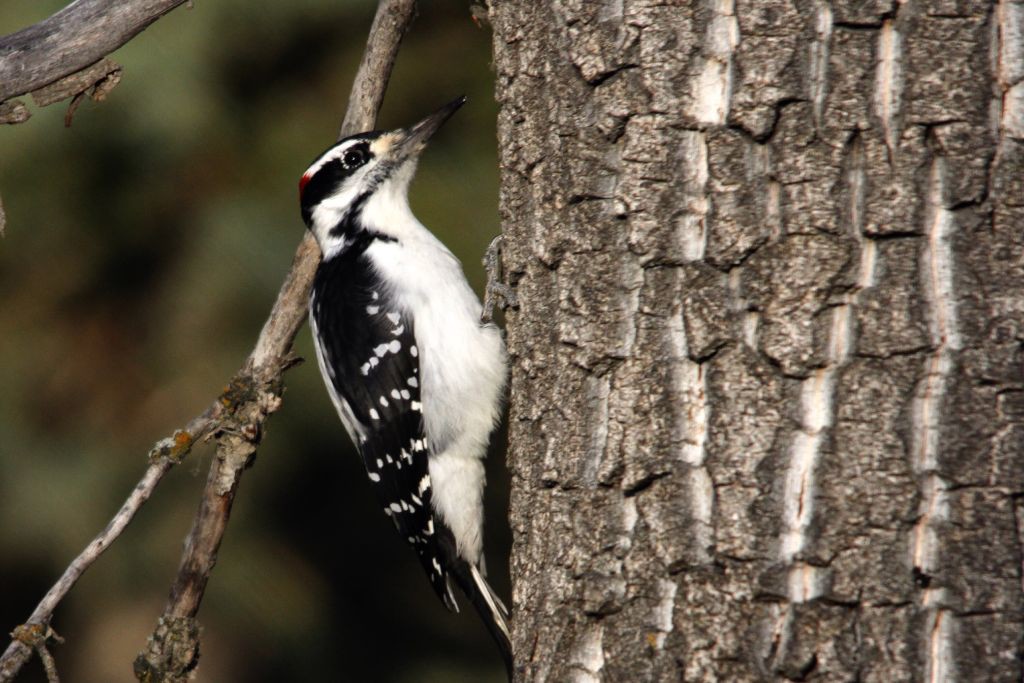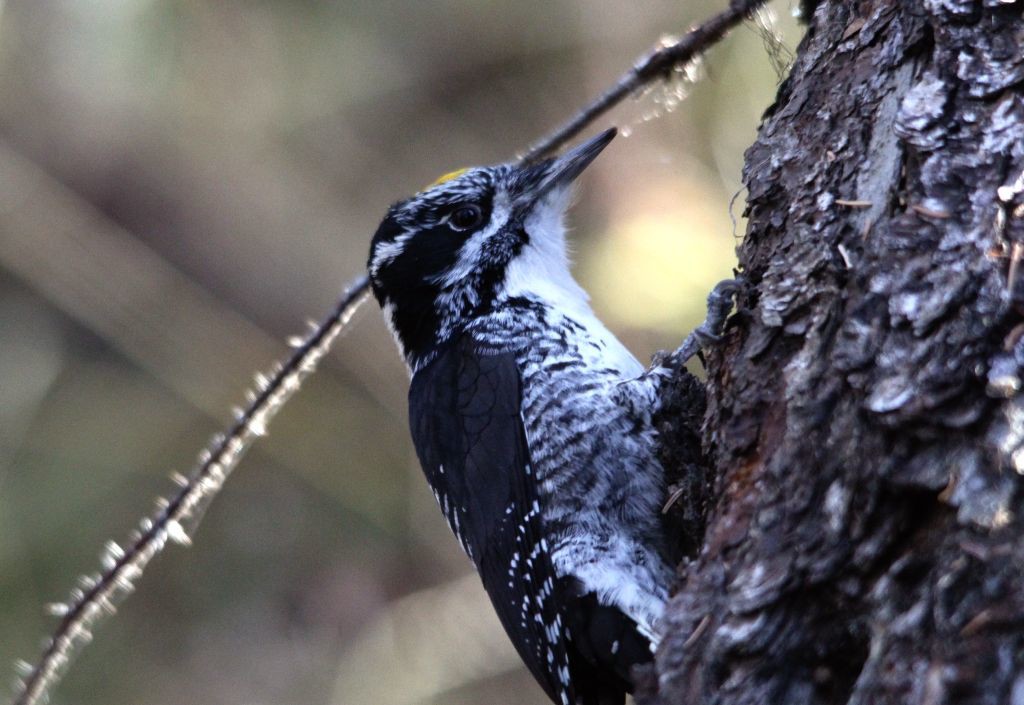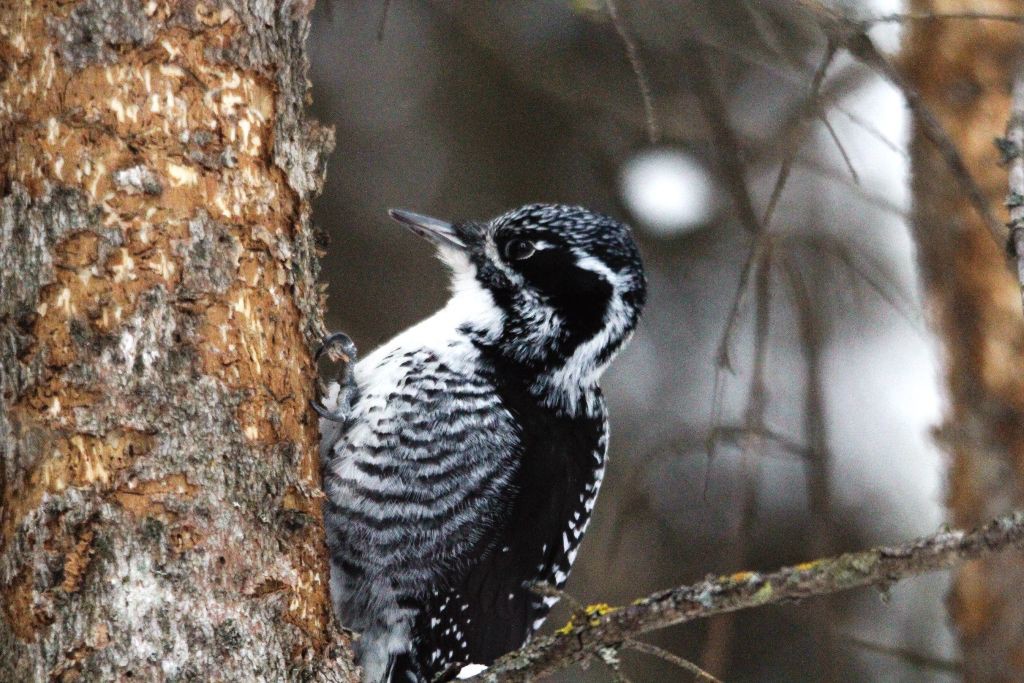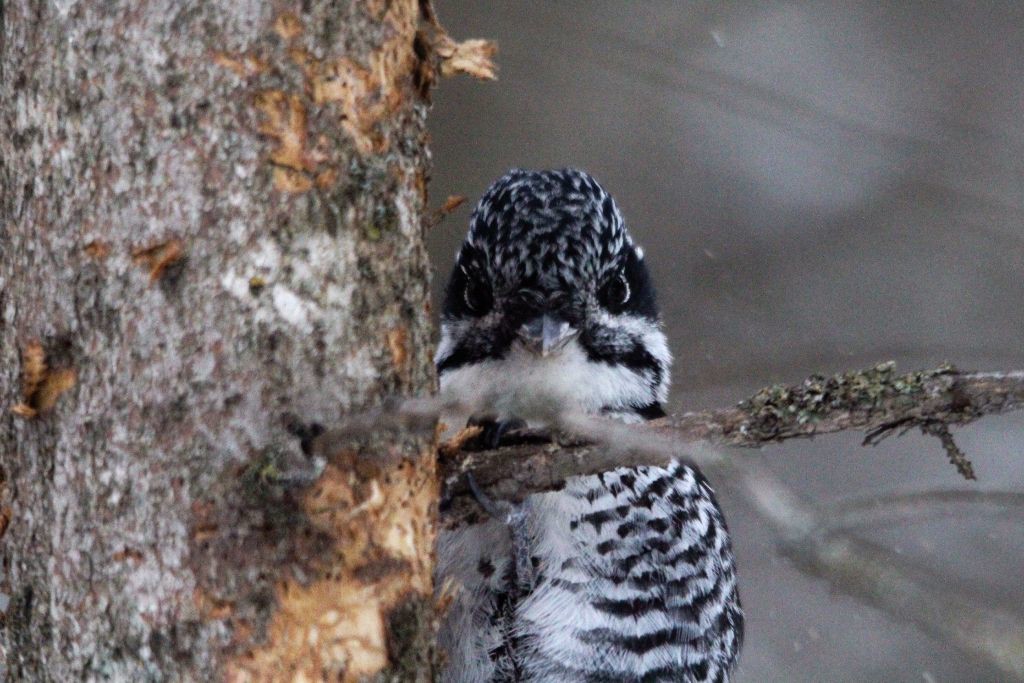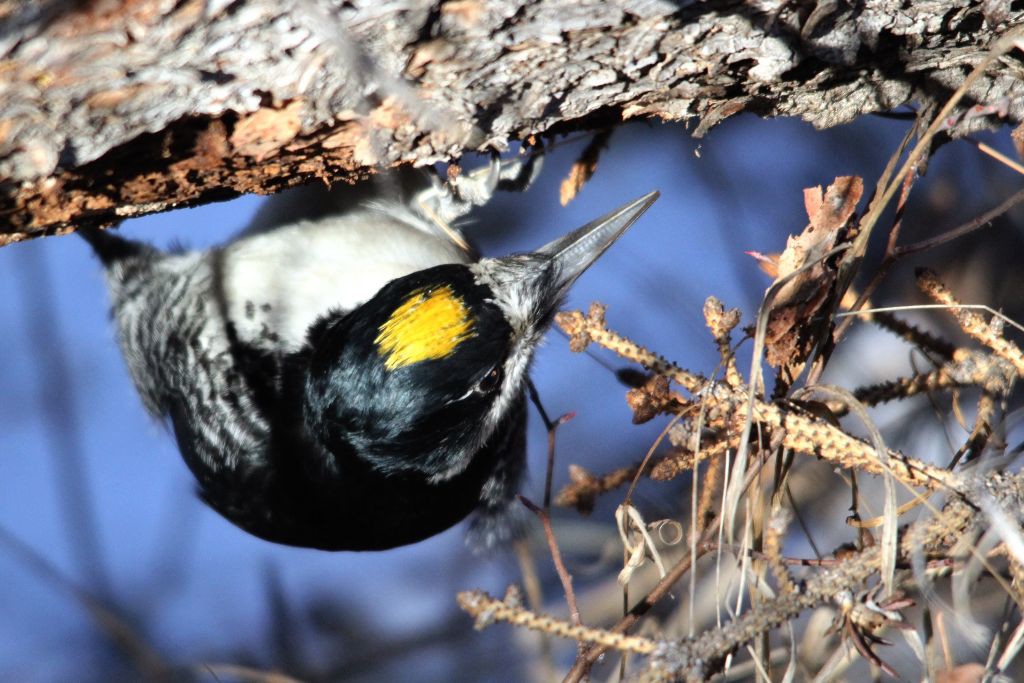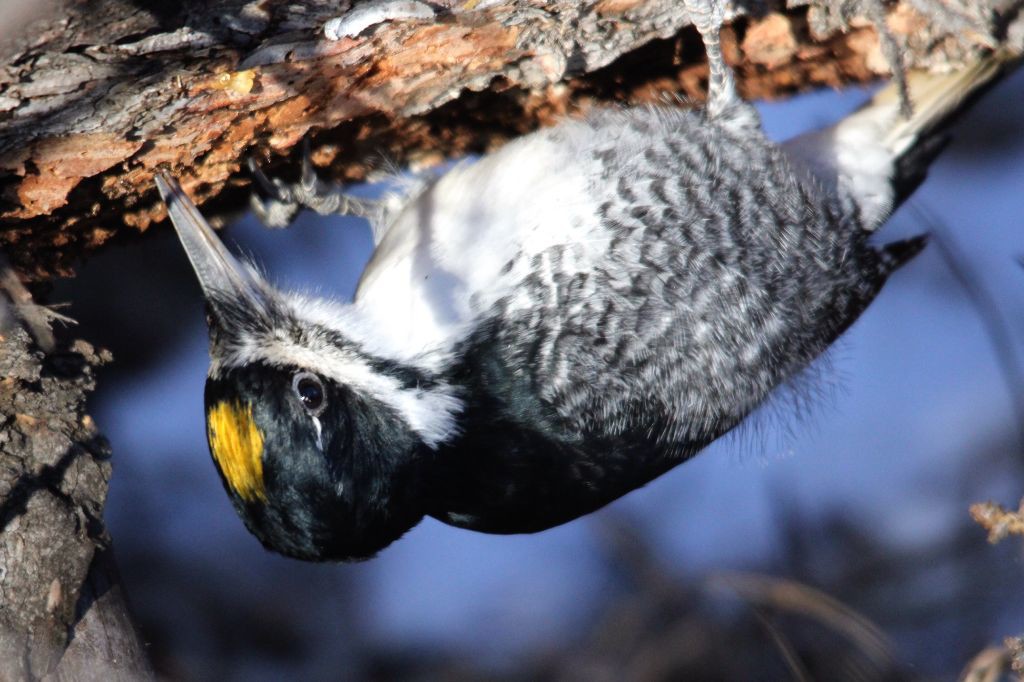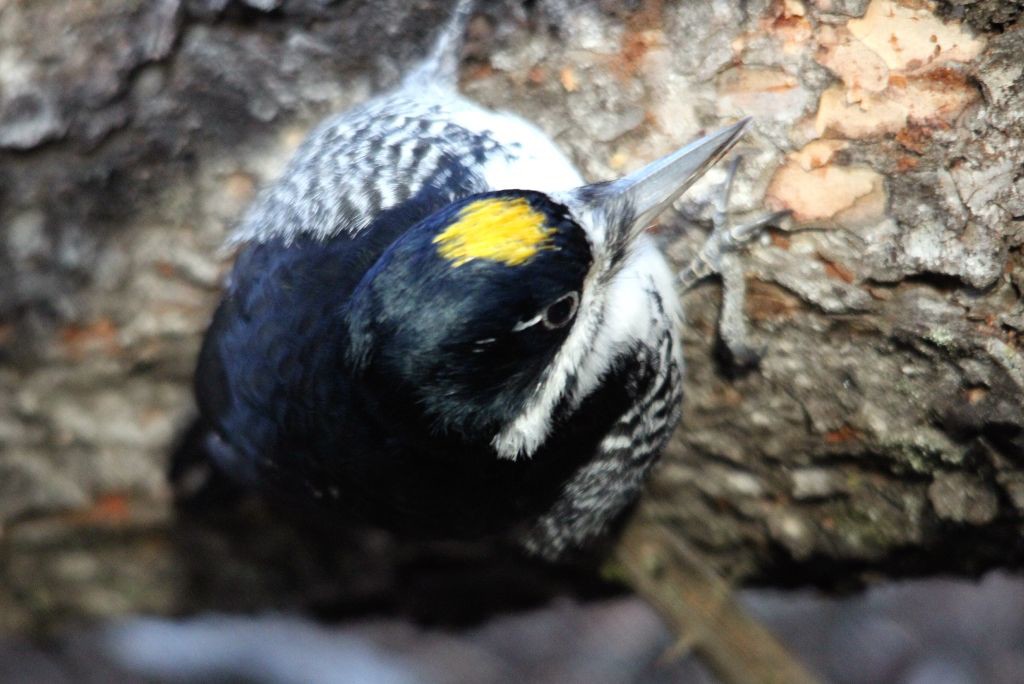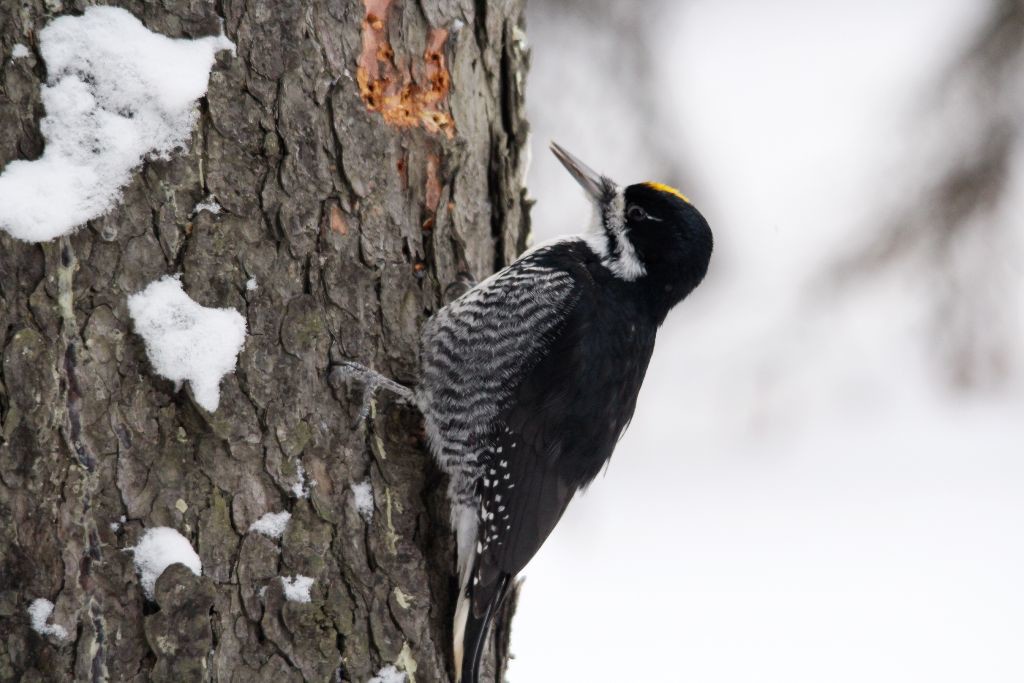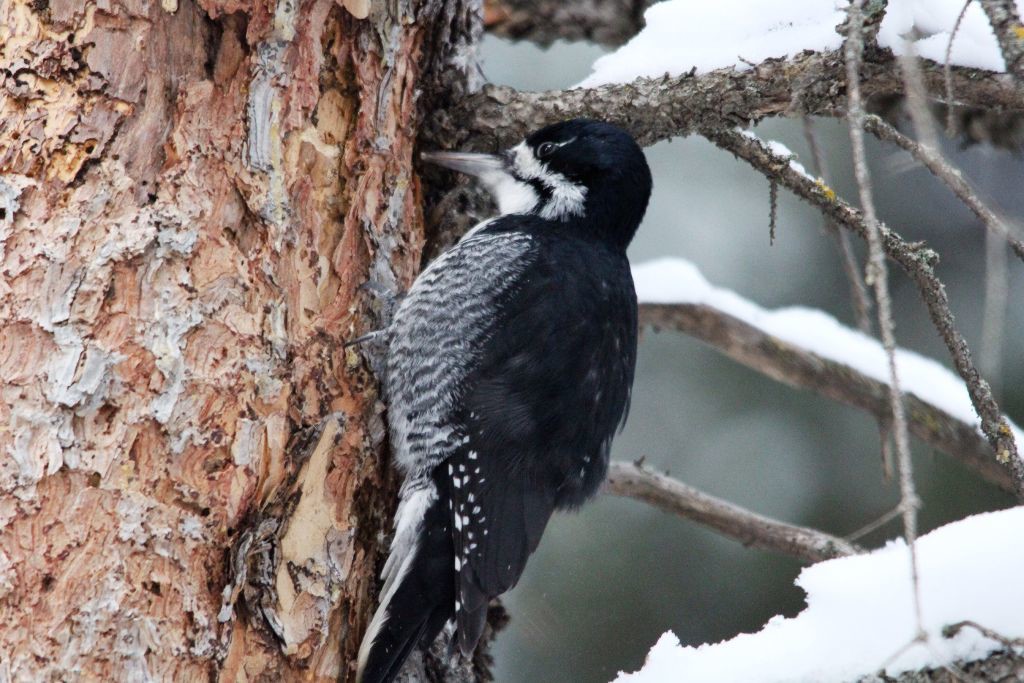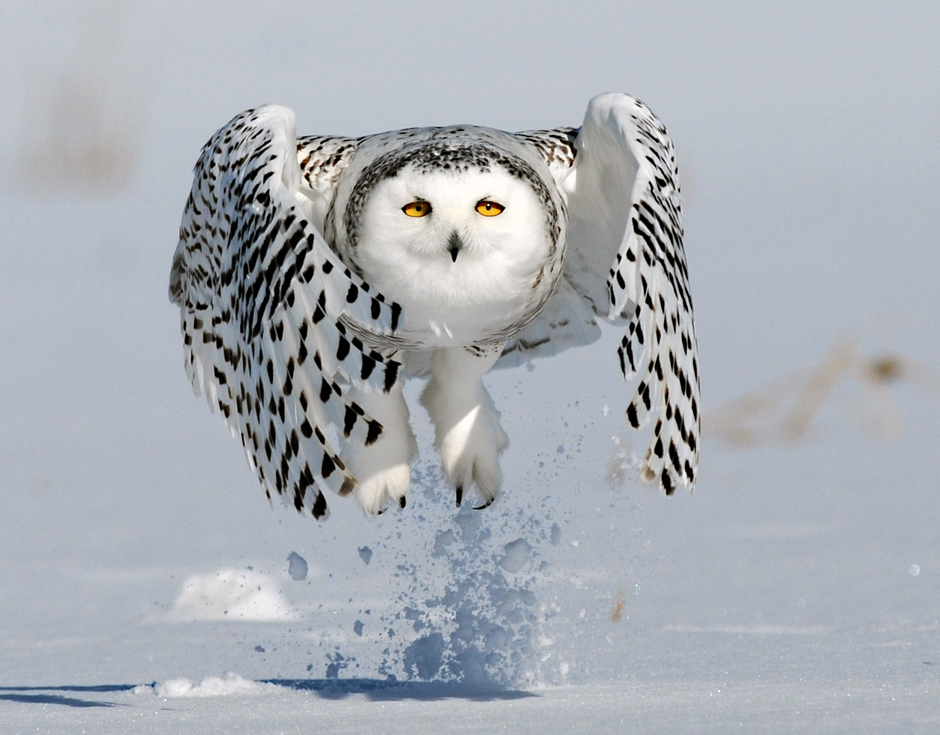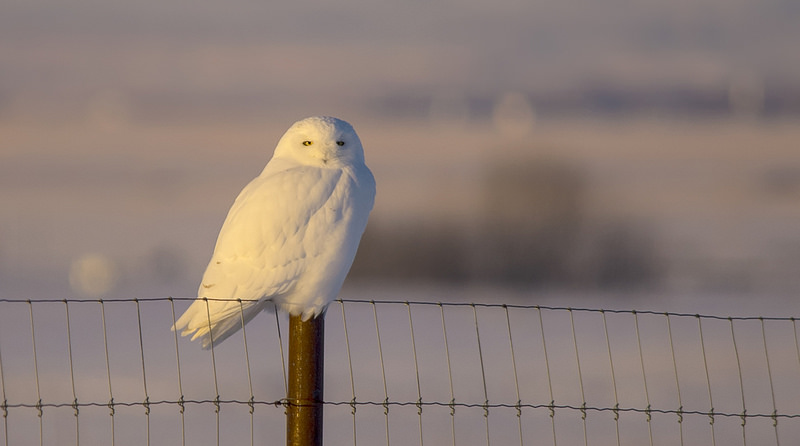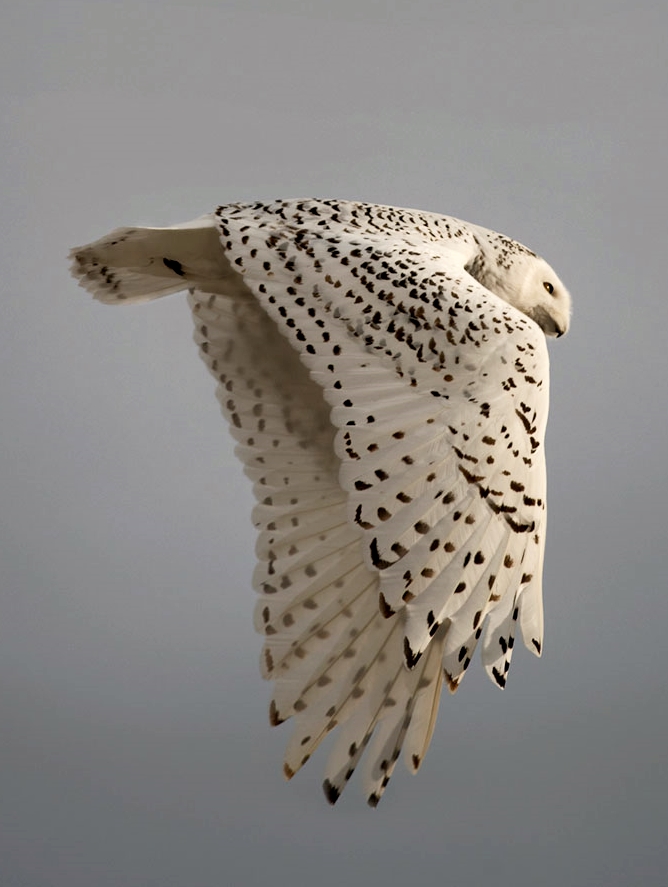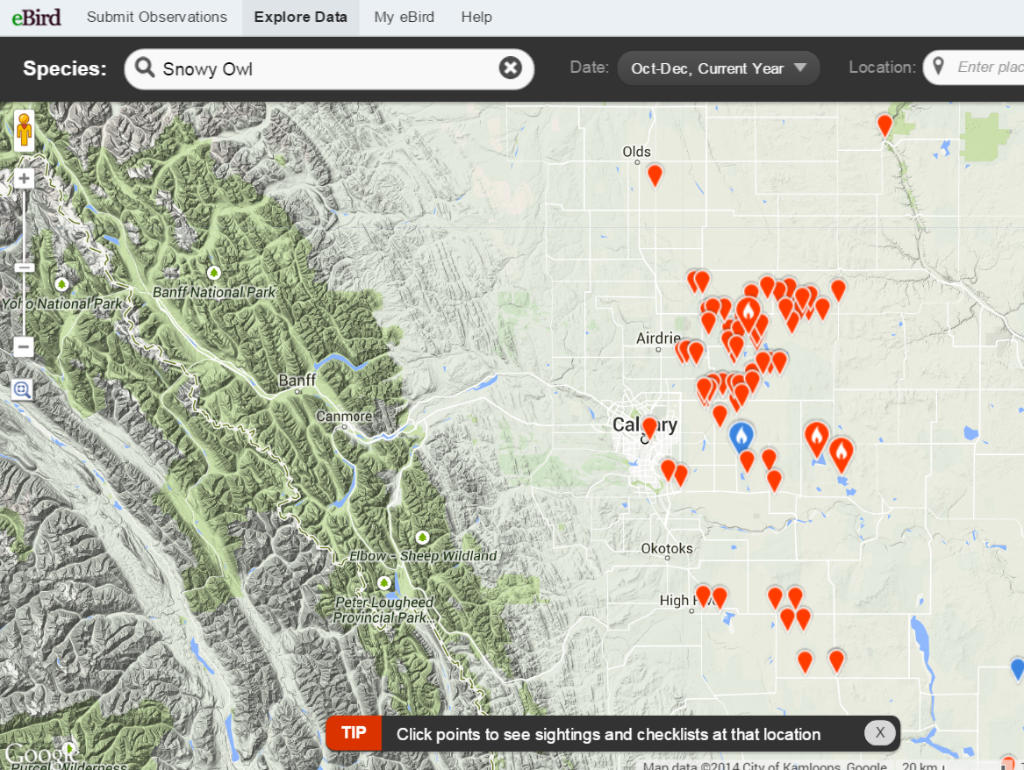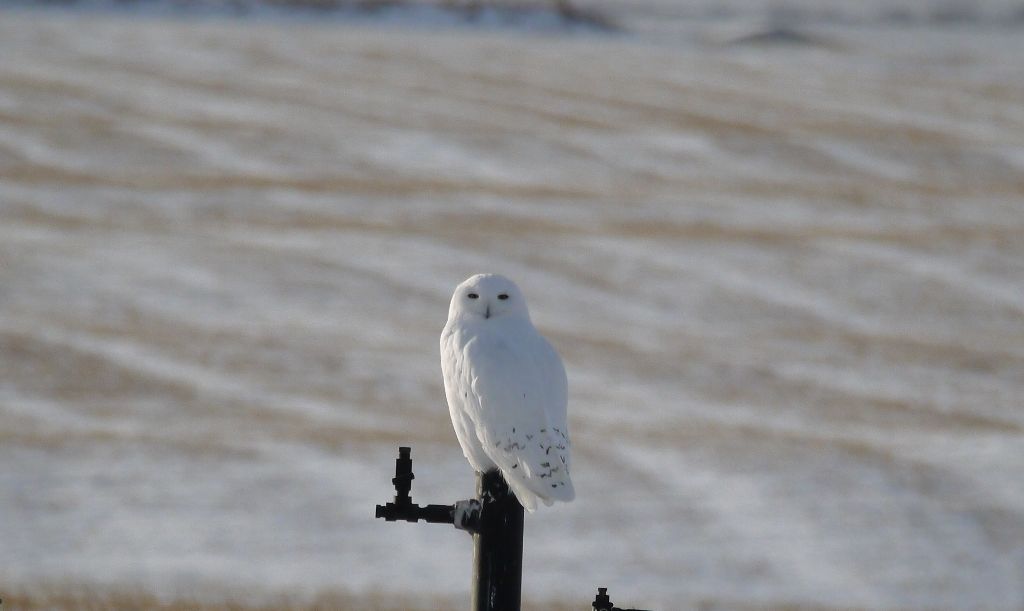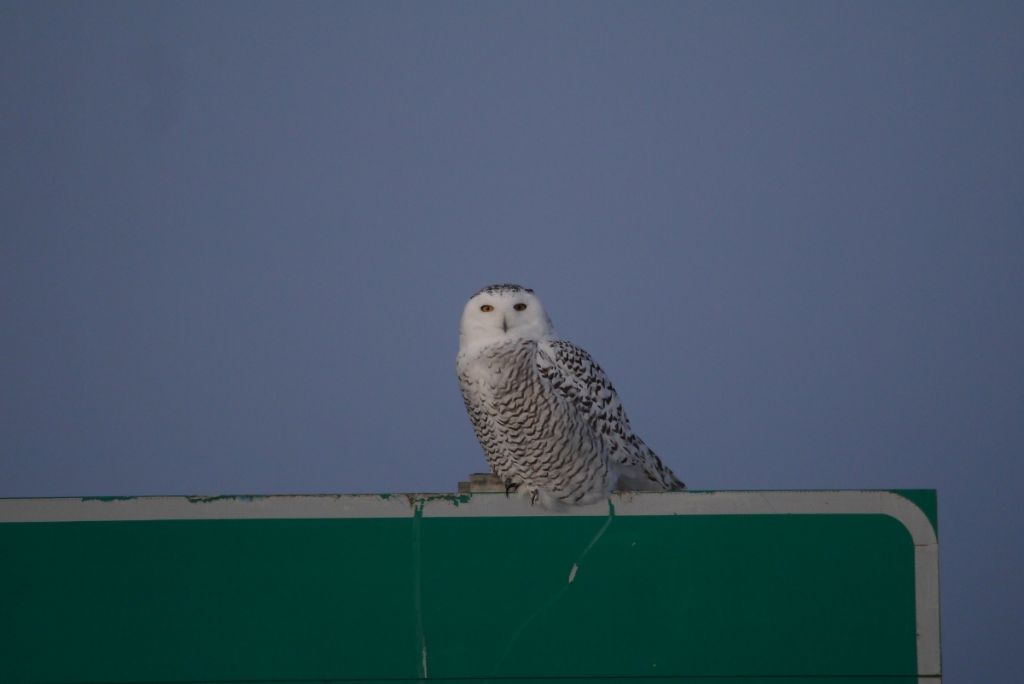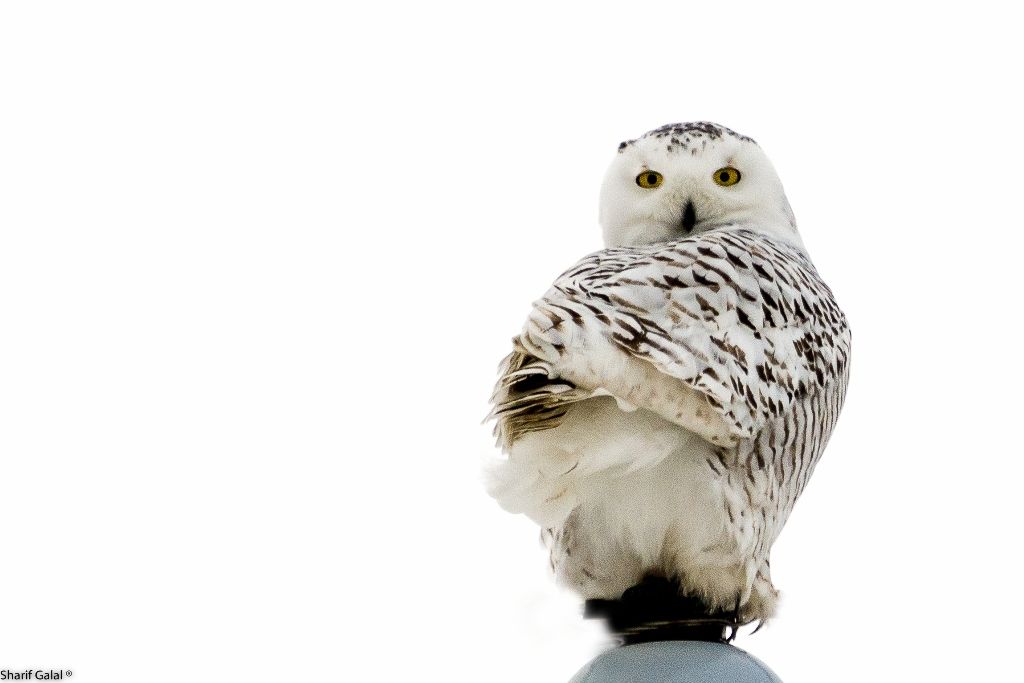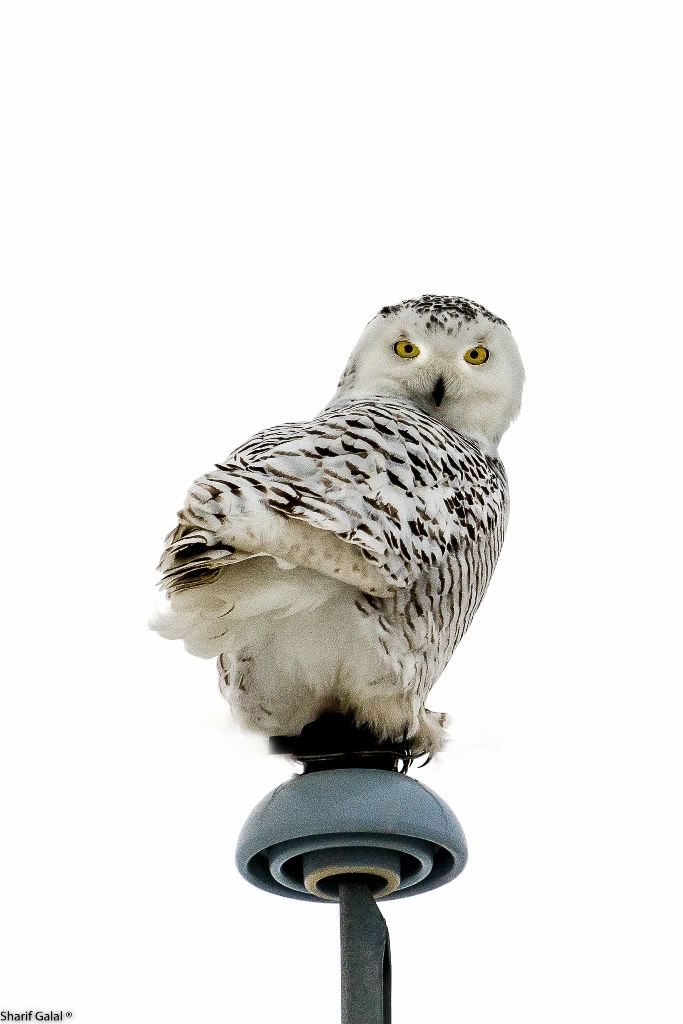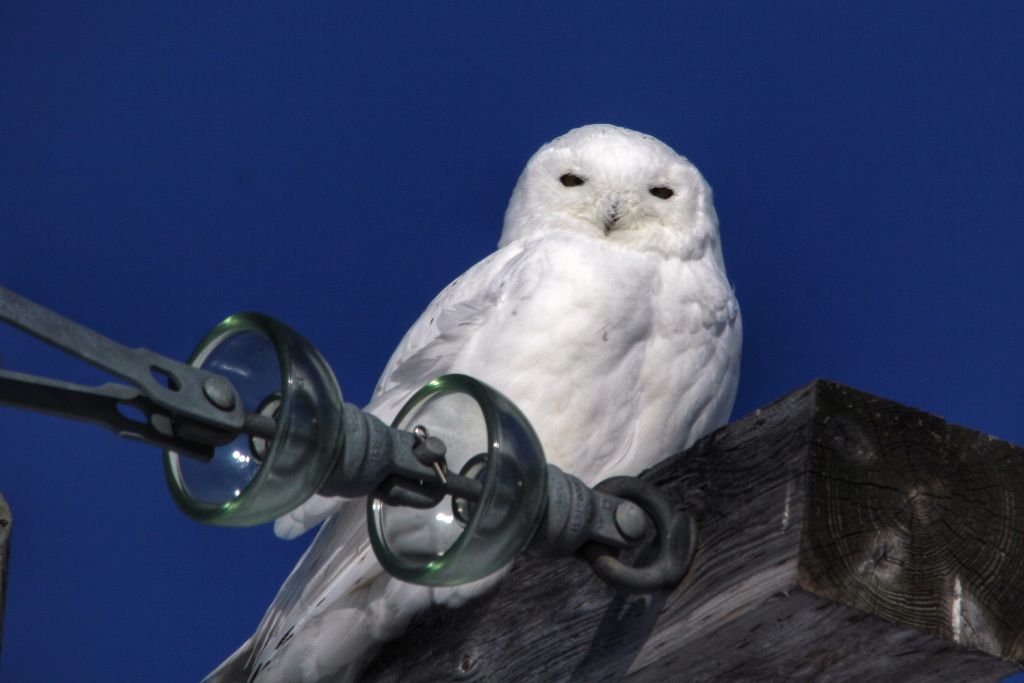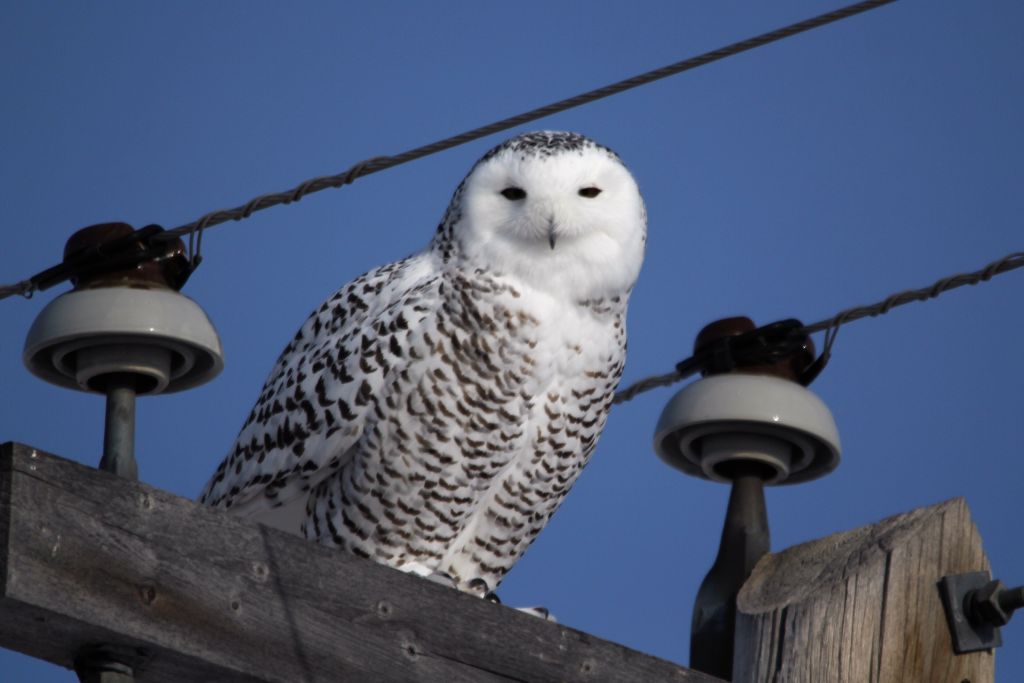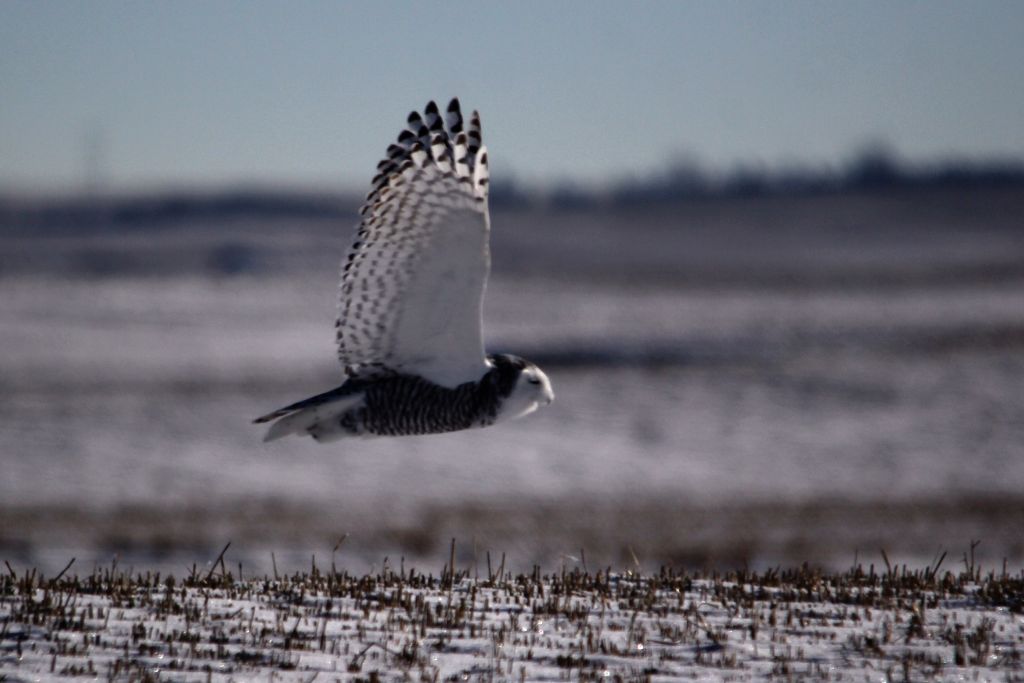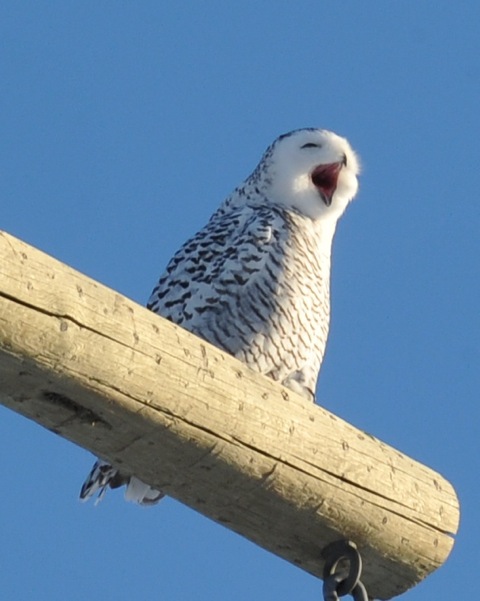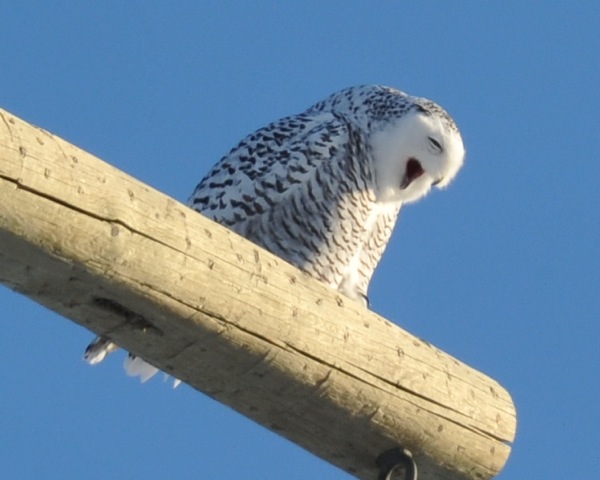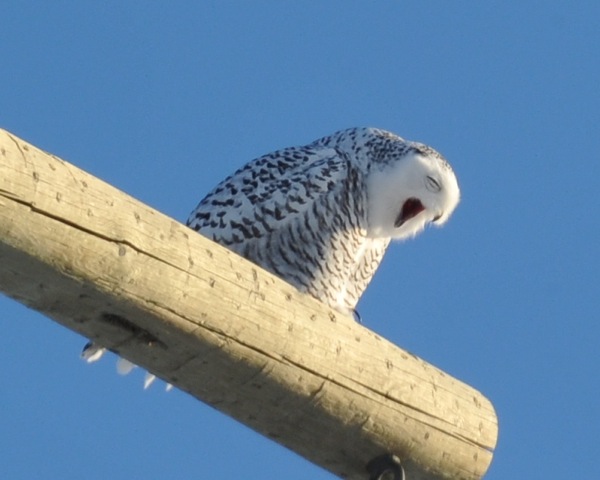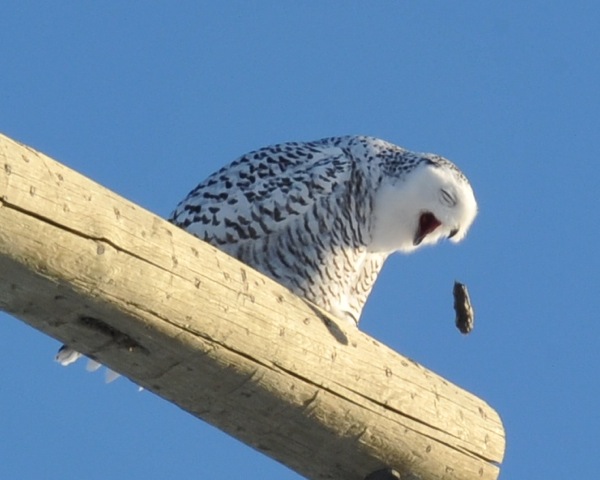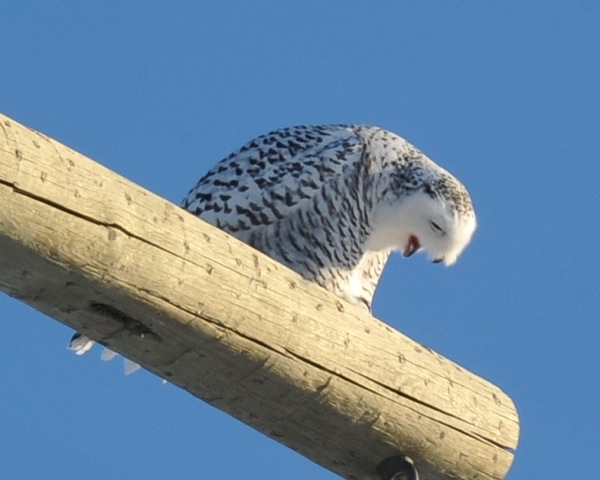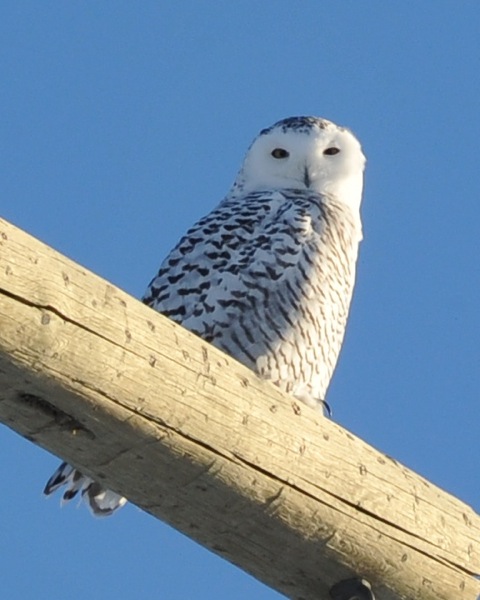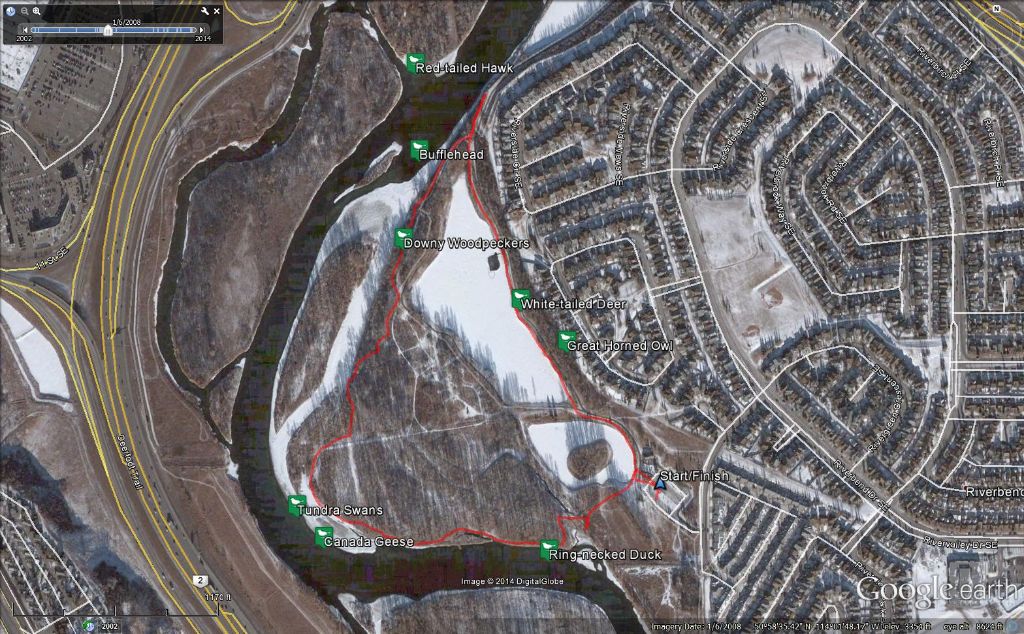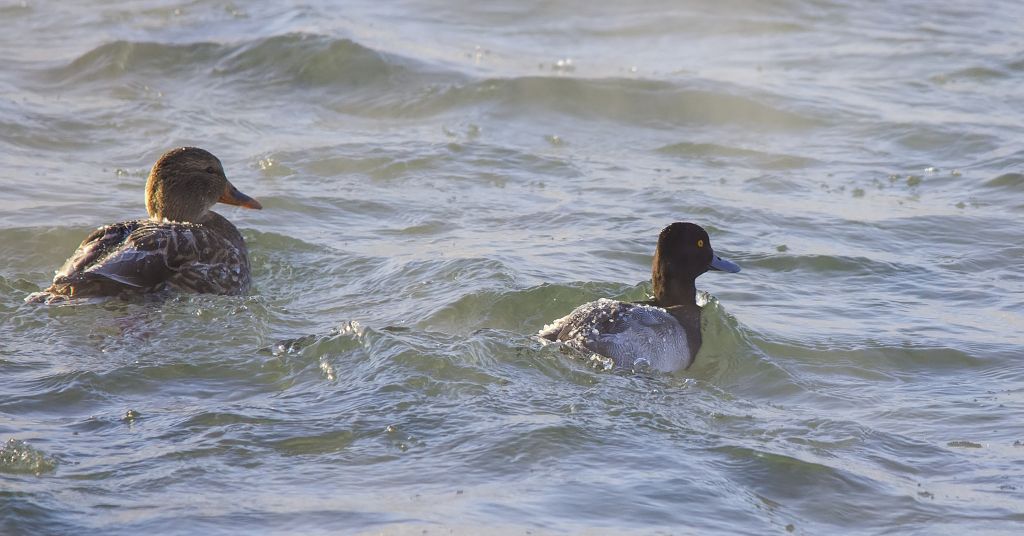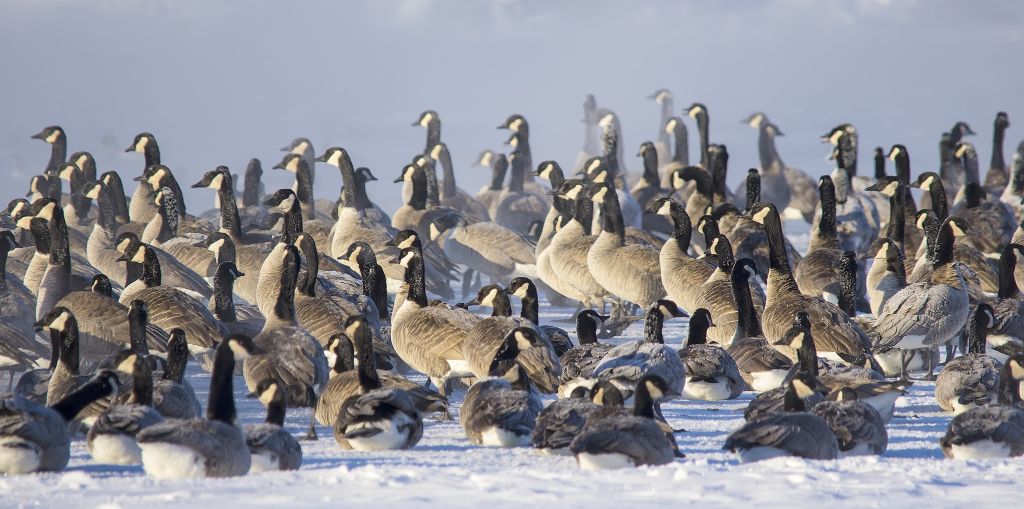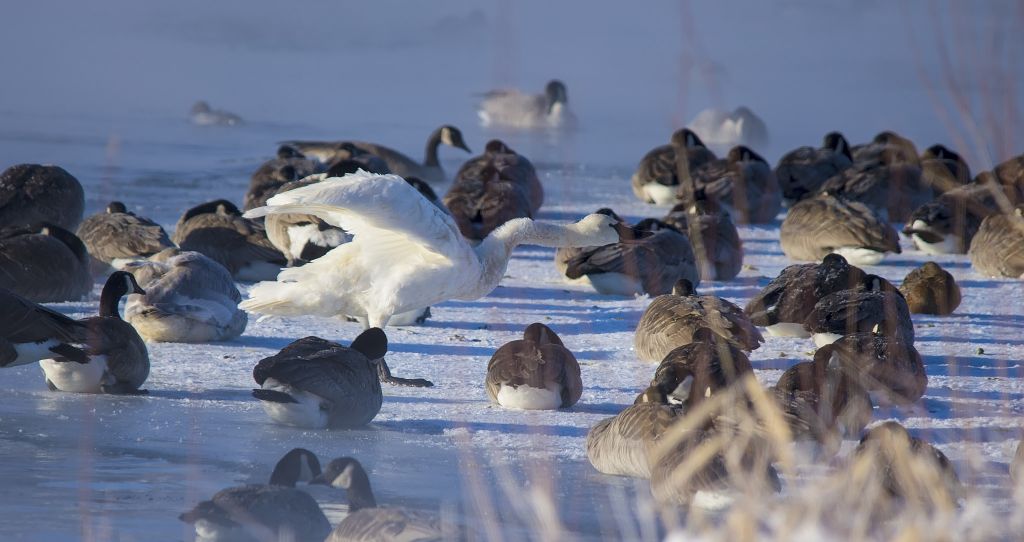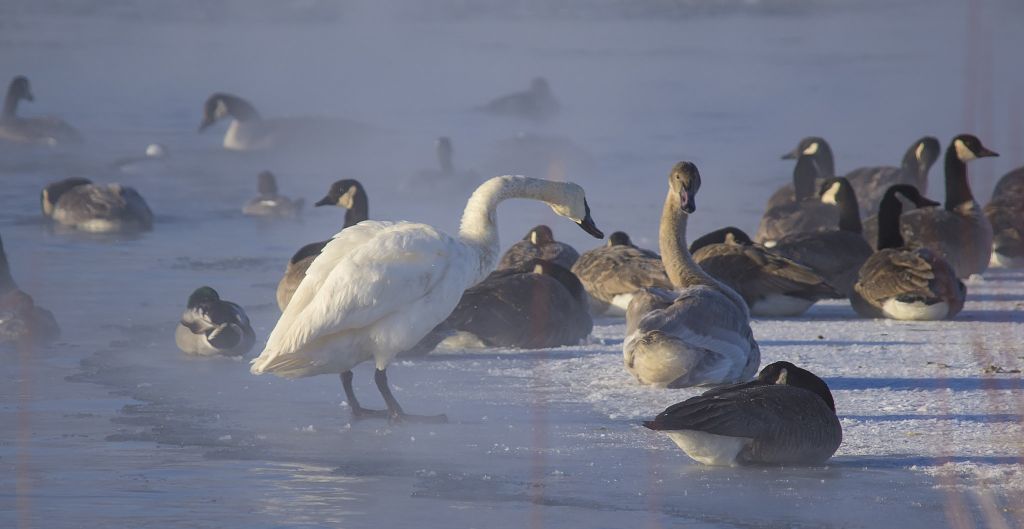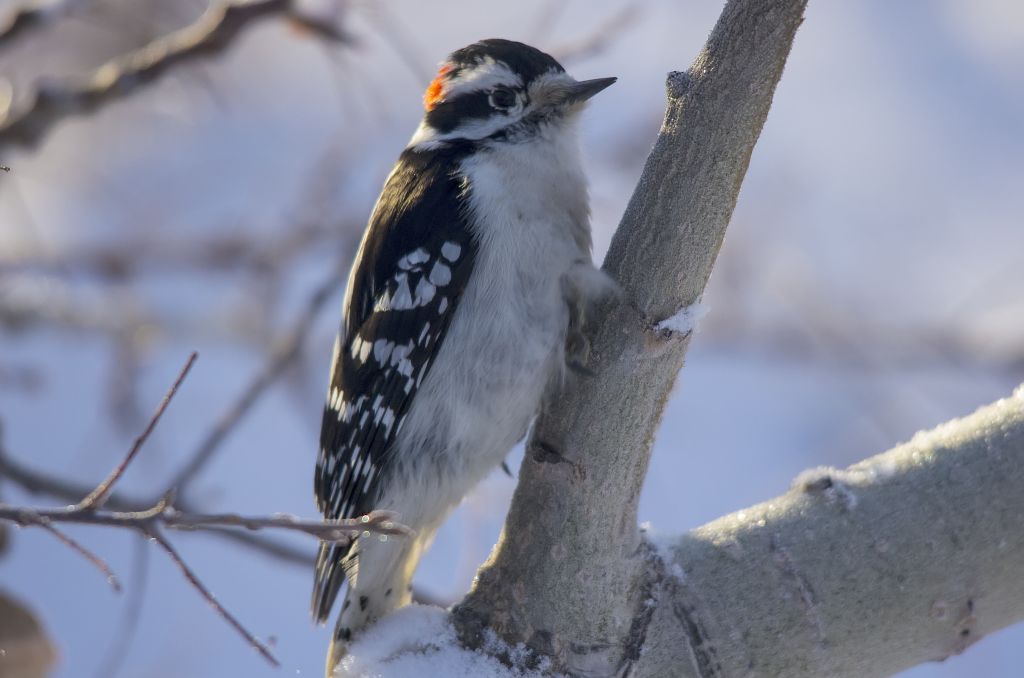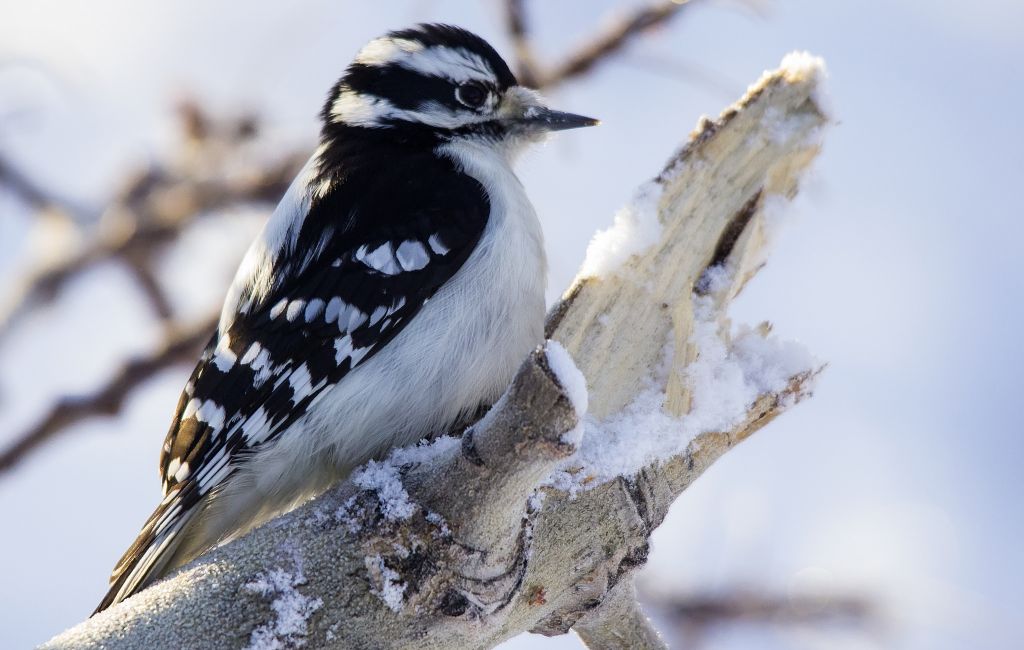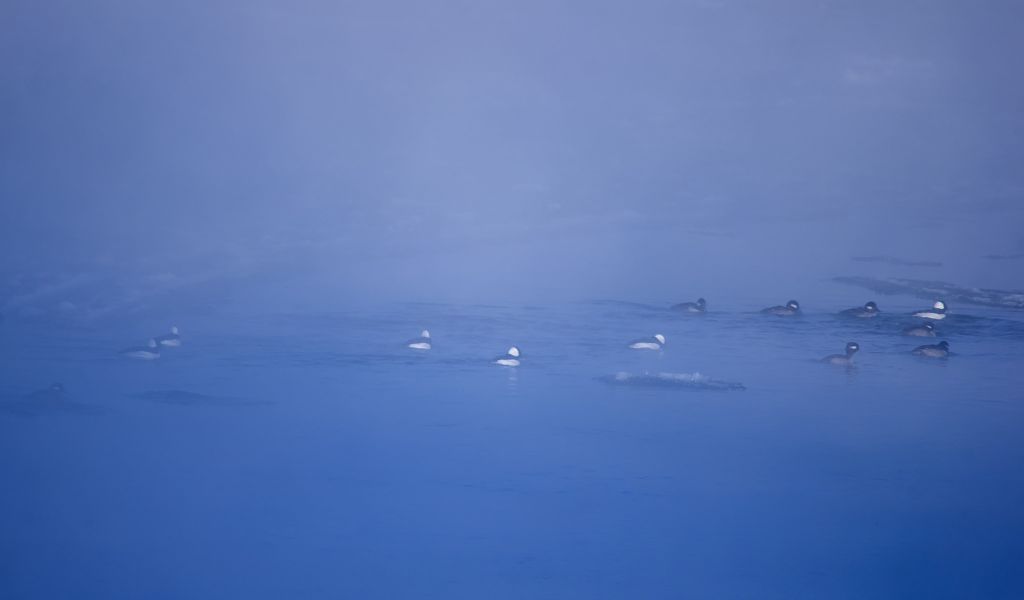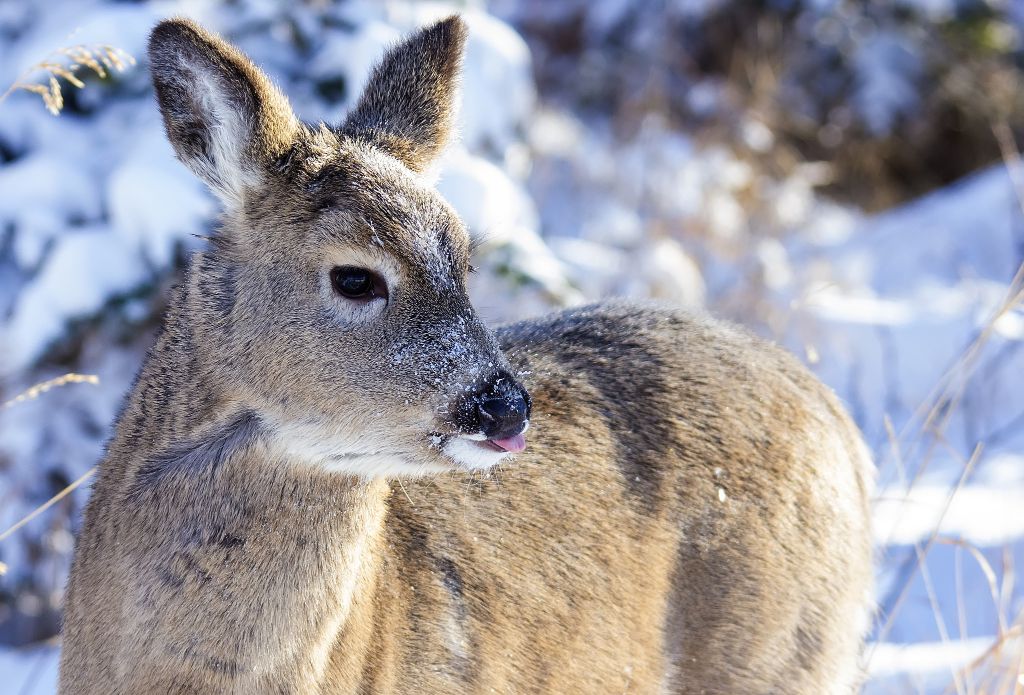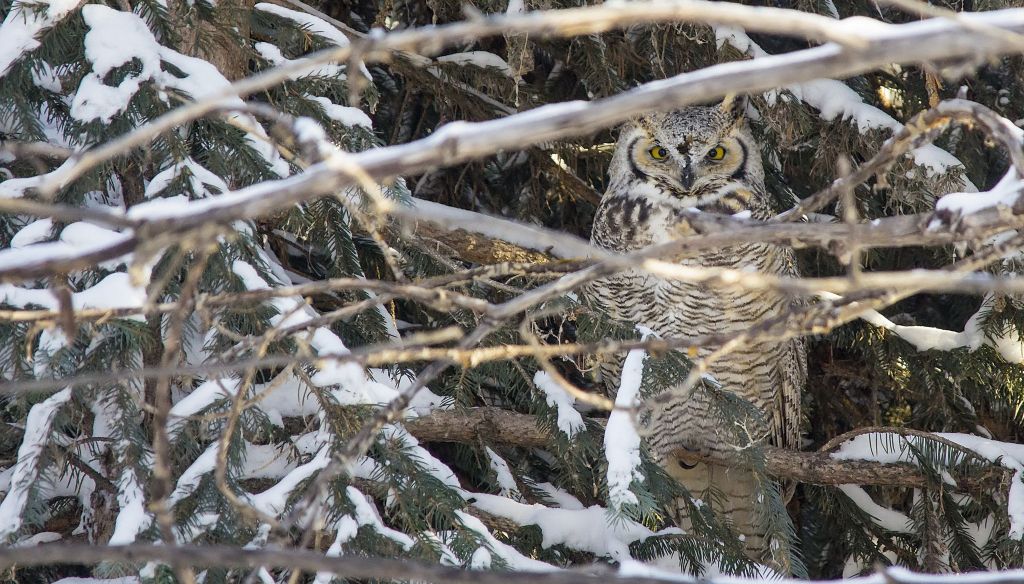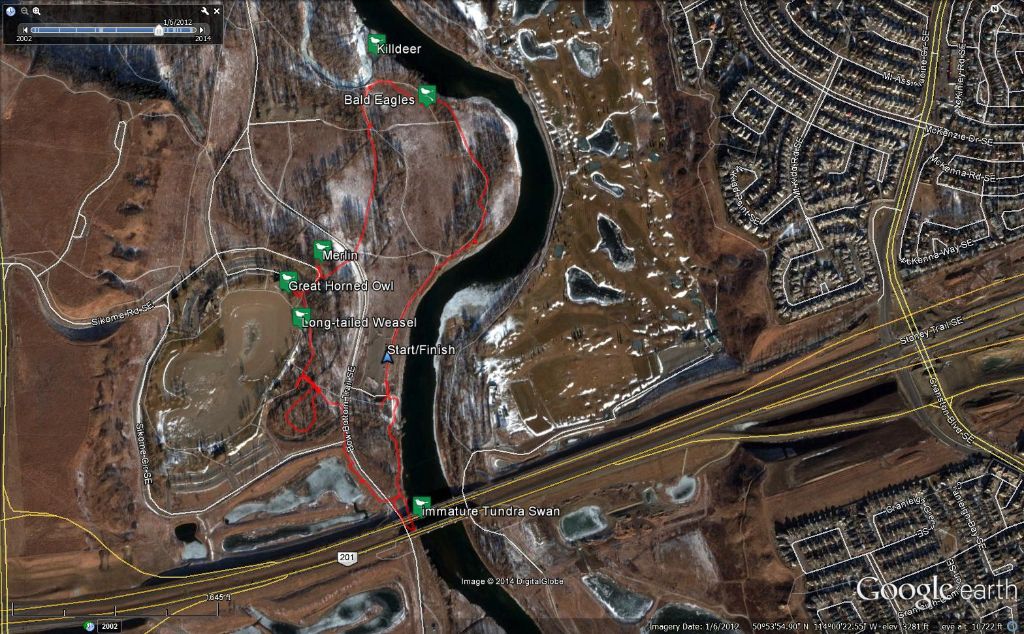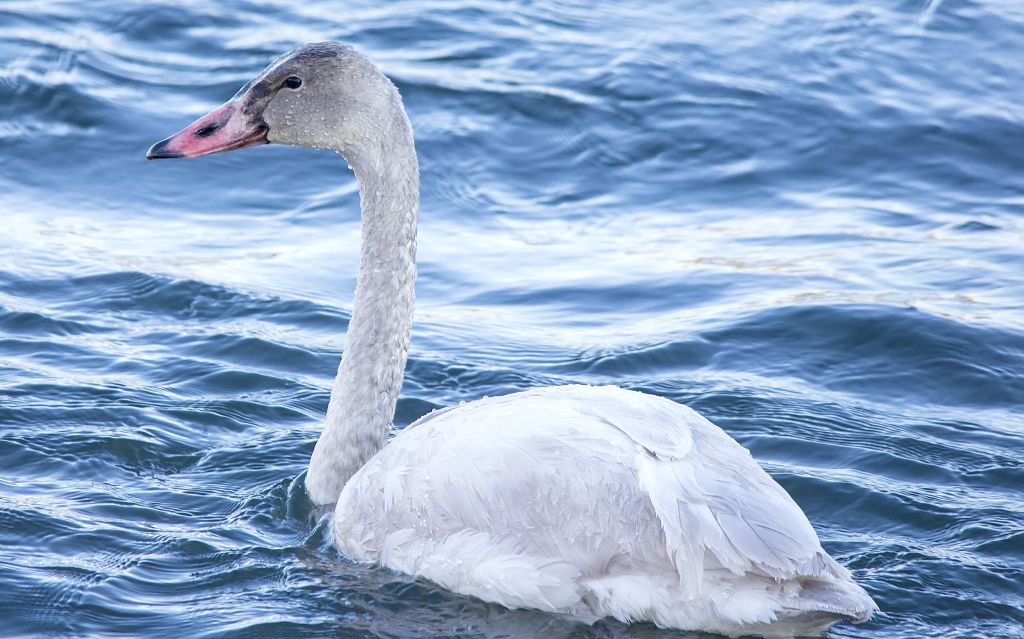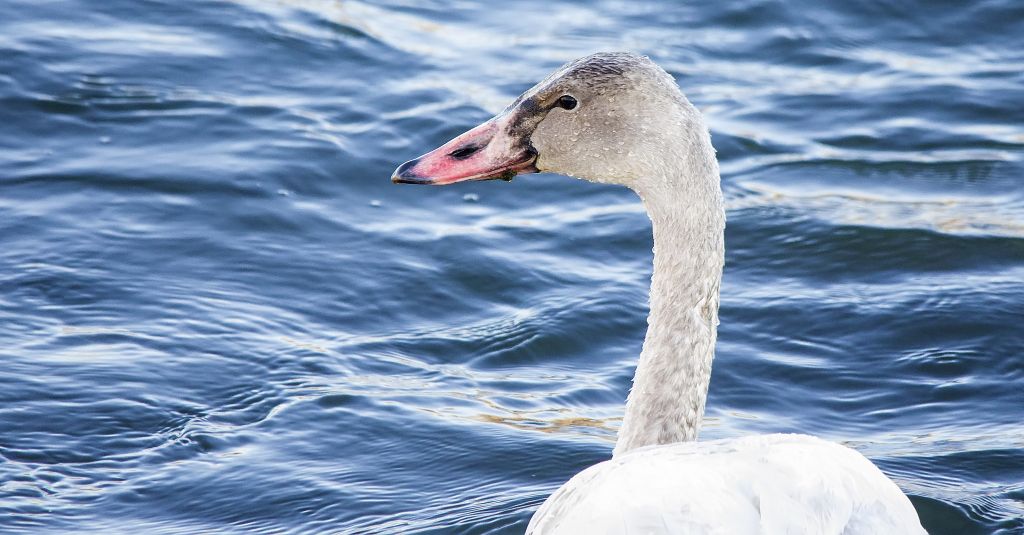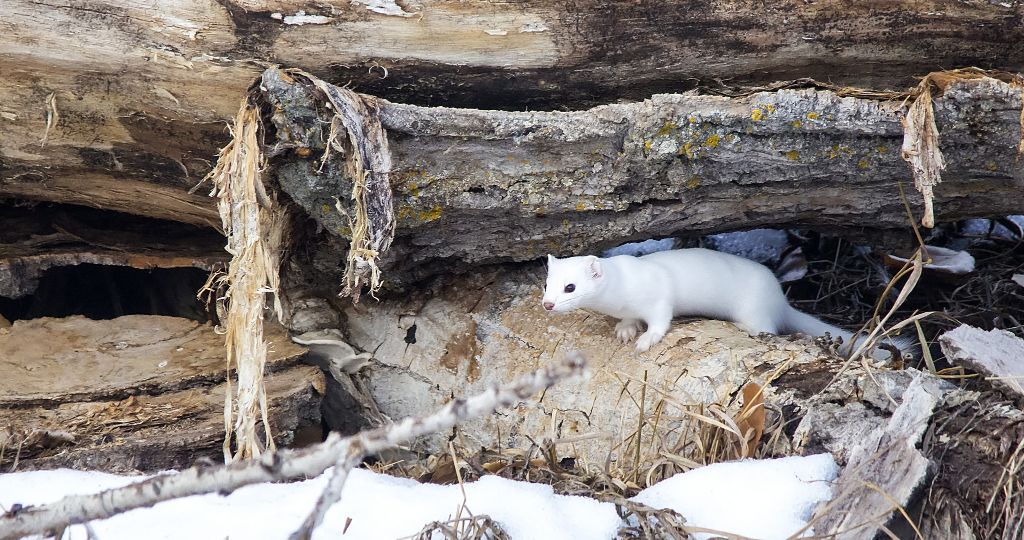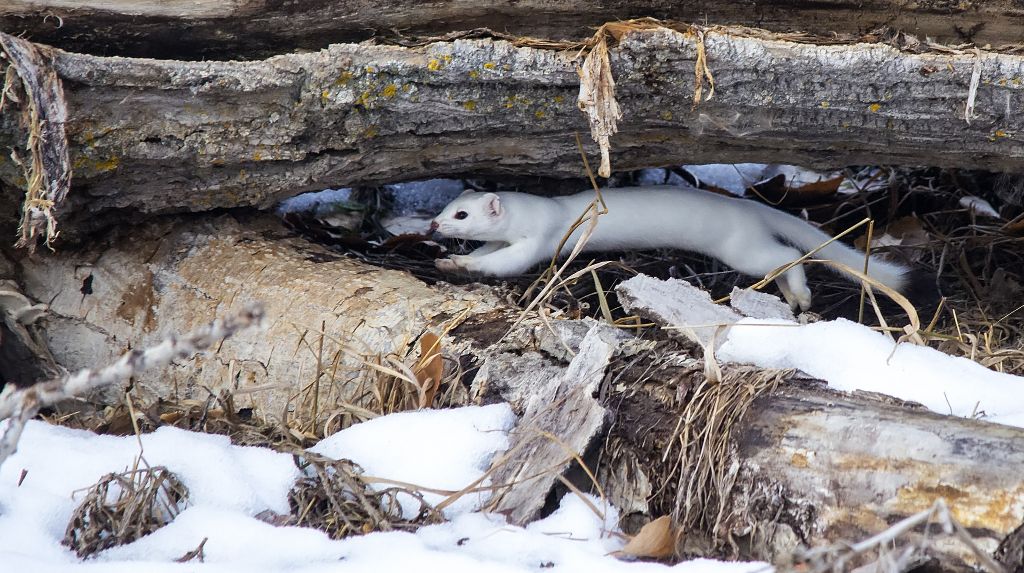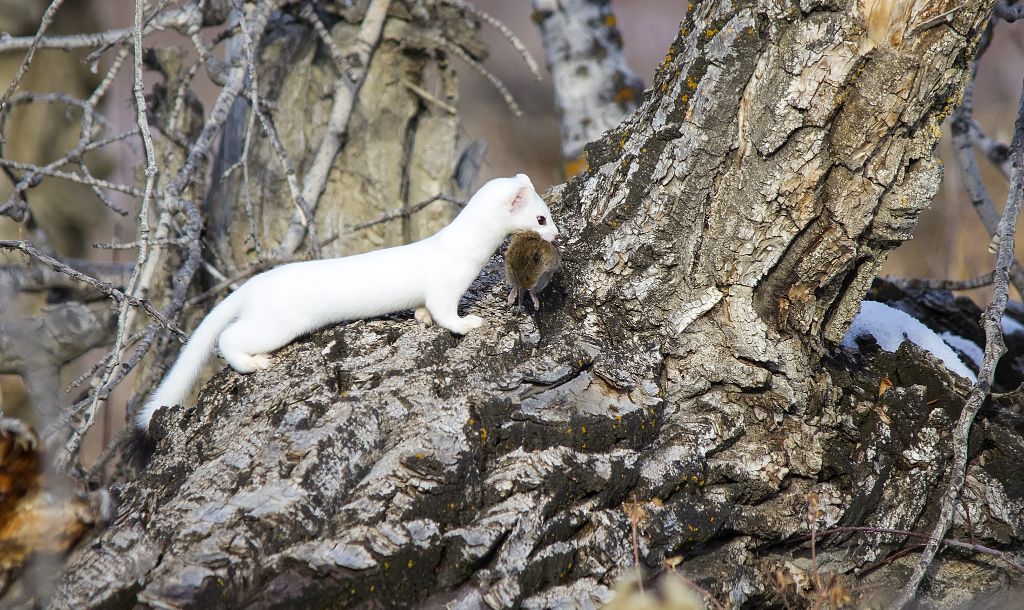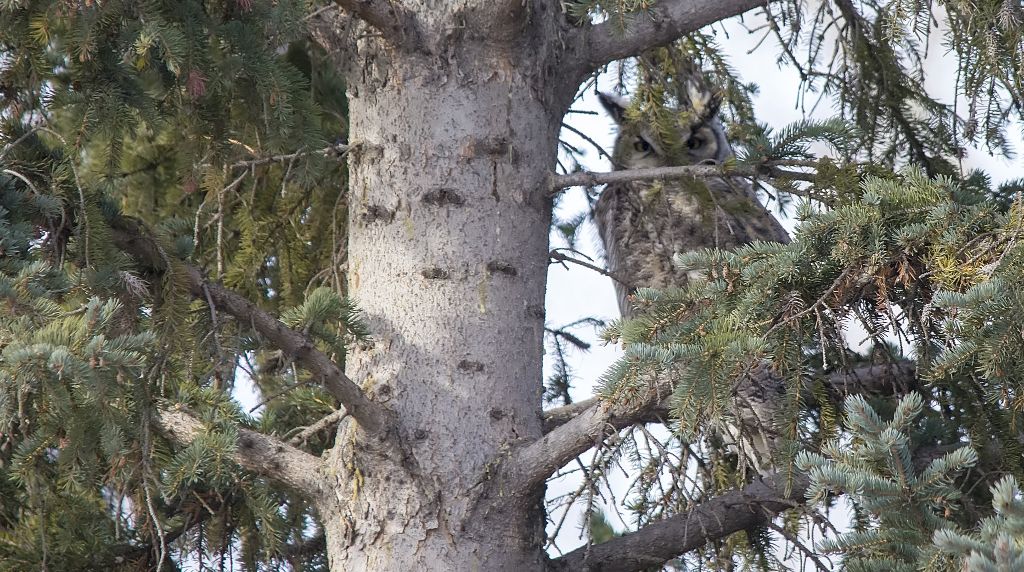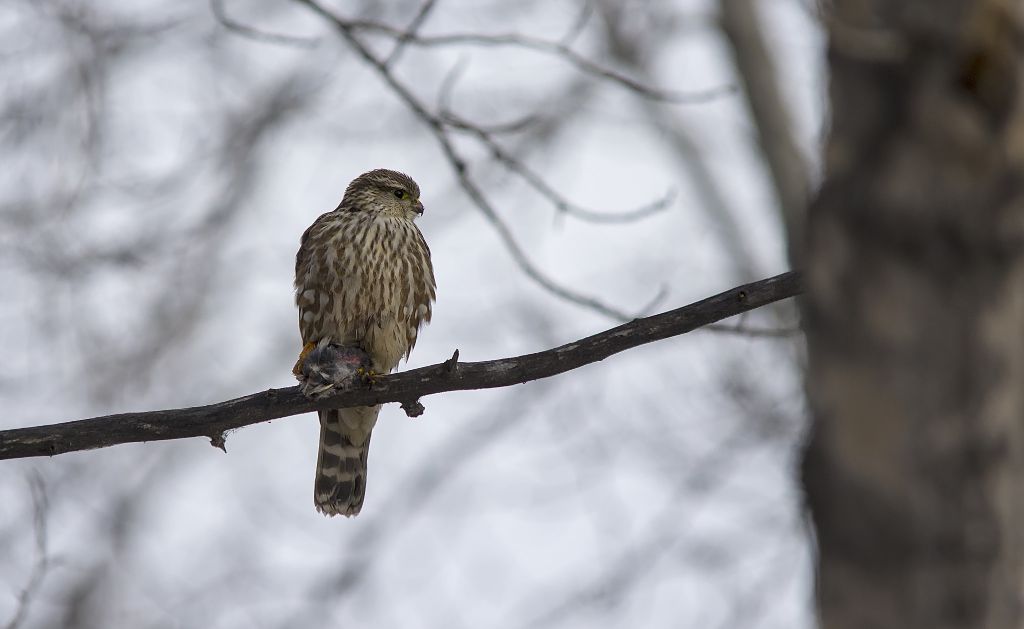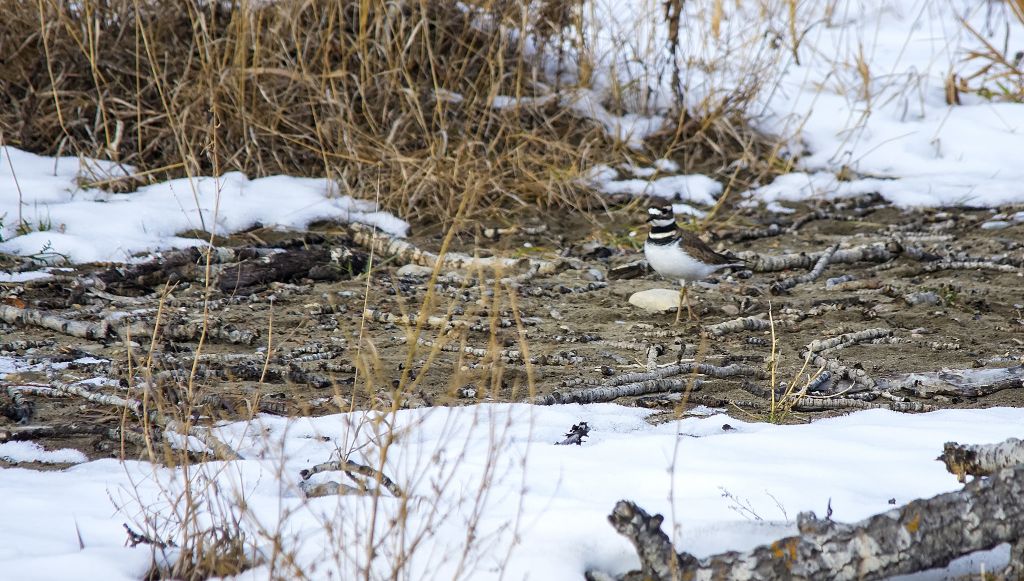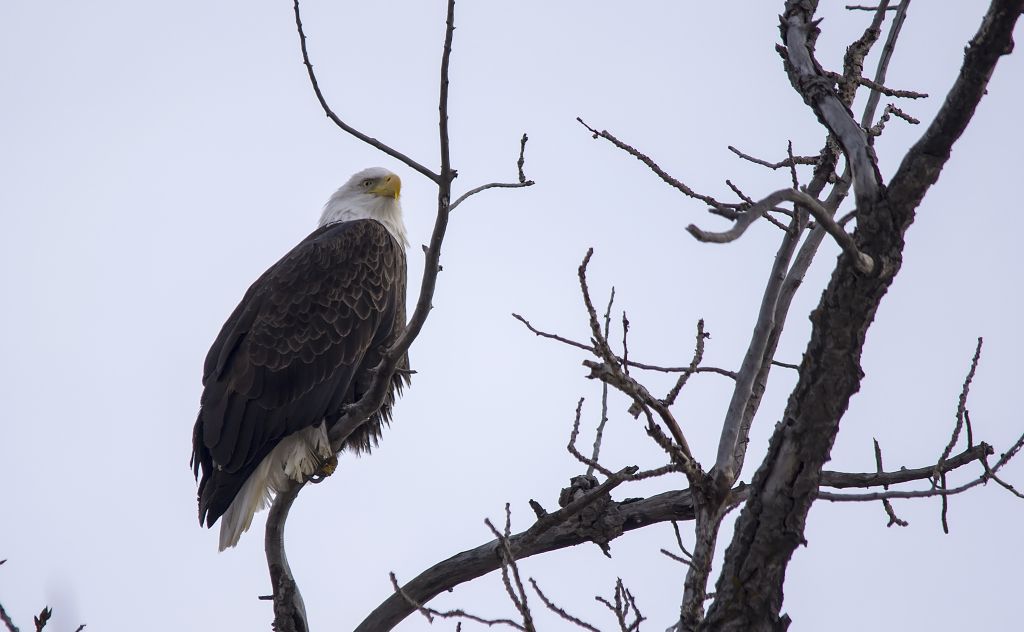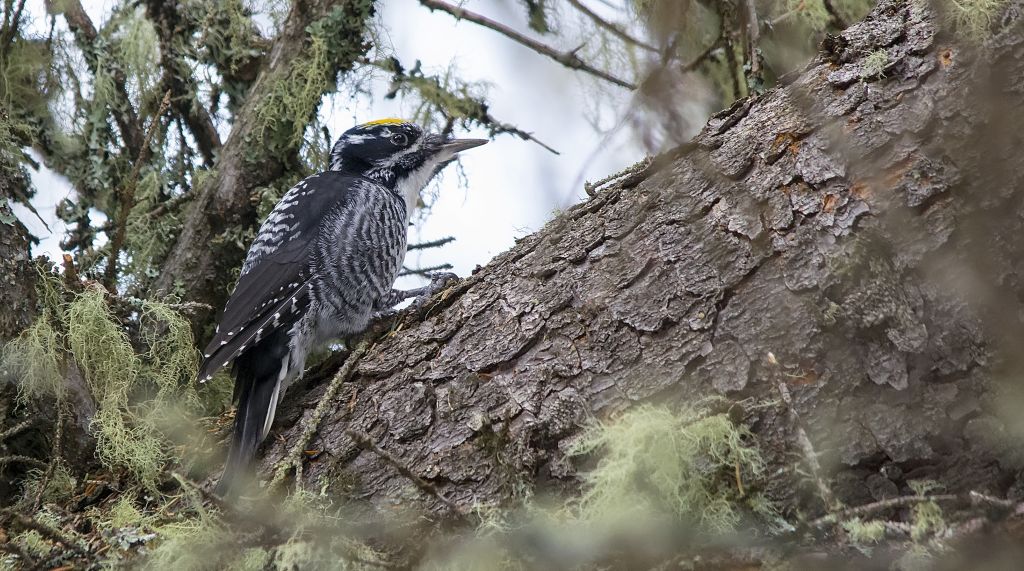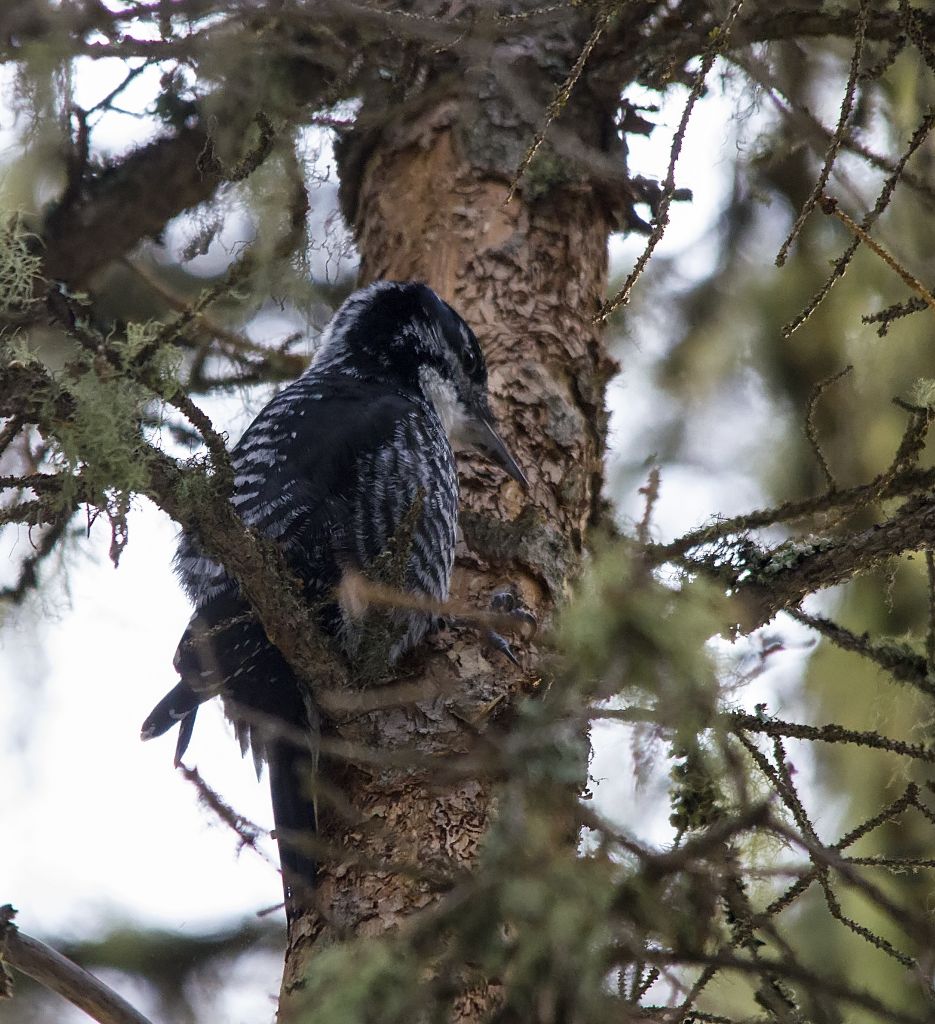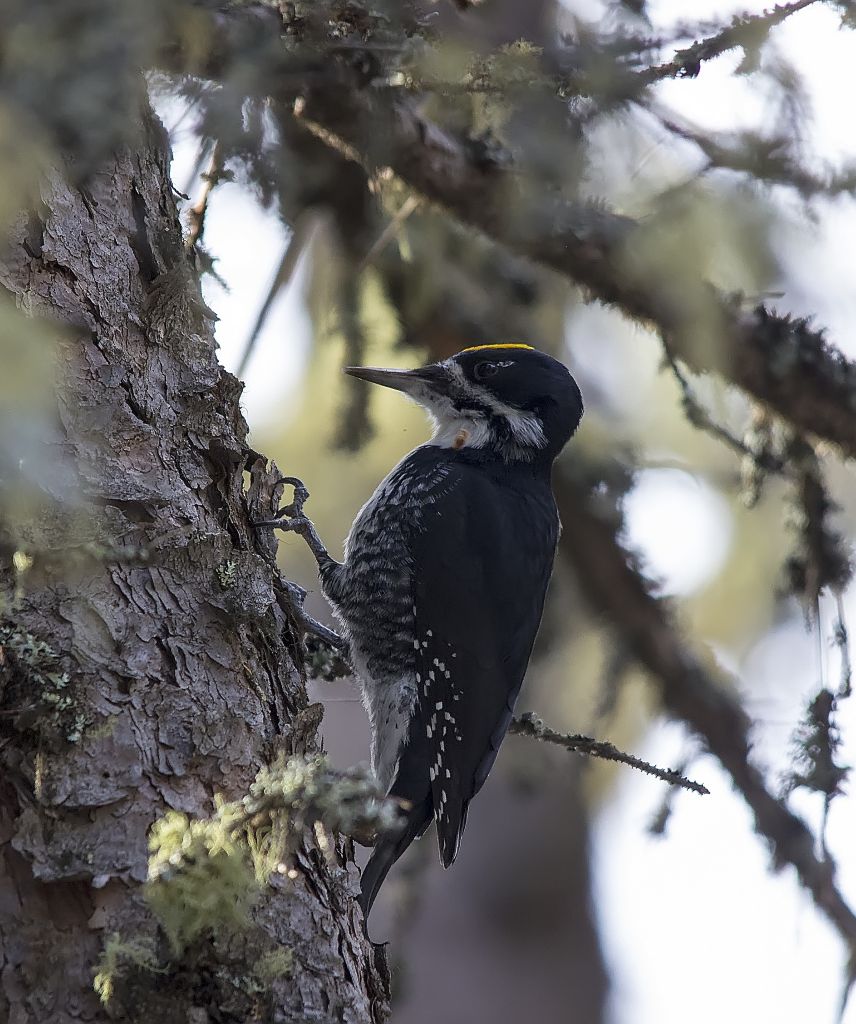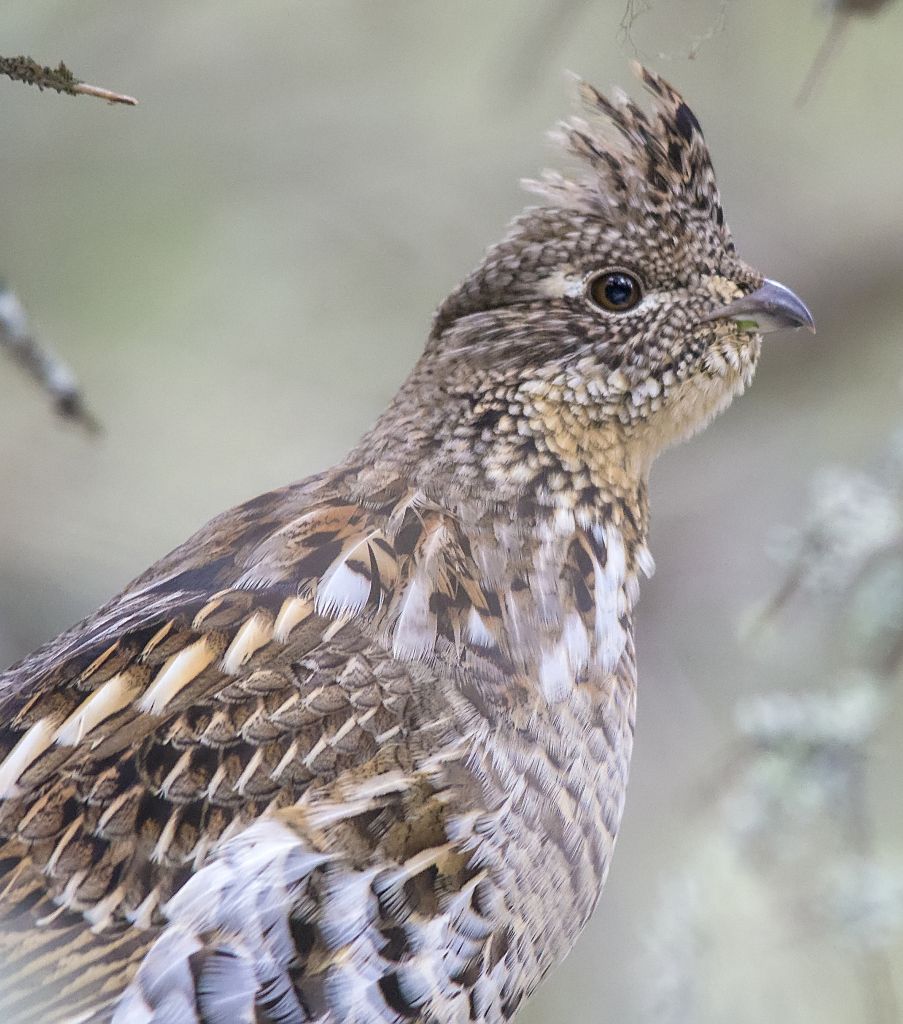Posted by Dan Arndt
Last week, our little group of birders headed out to Griffith Woods park. With stories of Barred Owls, Sharp-shinned Hawks, and many other good birds we headed out for one of our longest walks of the season. I’ve often found that Griffith Woods can be rather boom or bust when it comes to birding, and this day was no exception. Sadly, this day was more on the bust side of the equation, though not a total loss, as we did find quite a few good birds, and enjoyed the warm weather and good company.
One of our first birds of the day was quite possibly our most exciting. A Sharp-shinned Hawk took off through the trees as we reached the second intersection on our clockwise loop of the park. Up until then, we’d only heard a couple of Black-capped Chickadees and a Common Raven or two flying high overhead. Sadly the light was completely against me, so this image was all I managed to capture. It is still good enough to get the proper field marks though!
As we plodded west through the slushy pathways, we heard Bohemian Waxwings in the distance, a few Pine Grosbeaks here and there, and finally a Downy Woodpecker popped into the open, giving us a few seconds of entertainment and good looks at it after such a long break between birds!
We headed further up and through the park in search of the Barred Owl that had been seen earlier in the week, or a Great Horned Owl, or even a Mountain Chickadee or two, but the rest of the west end of the park was quiet. Even the pond at the top of the hill remained pretty much empty, except for a couple of Canada Geese flying off as a dog walker disturbed them. Even the bird feeders in the back yards of the homes nearby were quiet, and only three House Sparrows popped into view where there had been nearly twenty earlier in the week!
We slowly made our way back through the woods towards the parking lot, and we did manage to stumble upon a small flock of Boreal Chickadees near the condo complex that usually harbors at least one Pileated Woodpecker. Around the time that we reached that point, the sun came out for a few more minutes while these little birds fluttered around us in the bushes and trees nearby.
It’s days like this that you have to take the opportunity to find the beauty in the every day birds. As we rounded out our walk, a pair of Common Ravens were perched in a nearby tree. The light was hitting this one in just the right way to show off some of the iridescence that you so rarely get to see. I thought that the subject, background, and the deciduous tree it was sitting in gave a nice false black & white effect.
So with that, we left Griffith Woods for another long while, and on to chase down a rare bird at Beaverdam Flats this week, along with many, many waterfowl!
Have a great week, and good birding!
